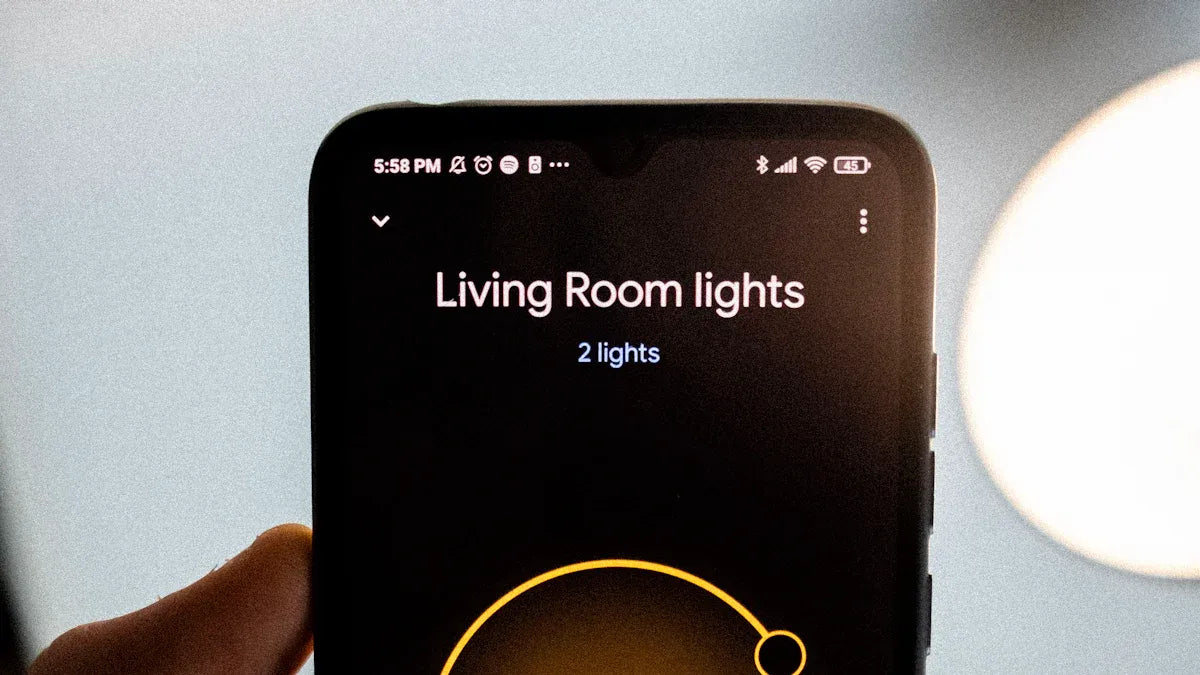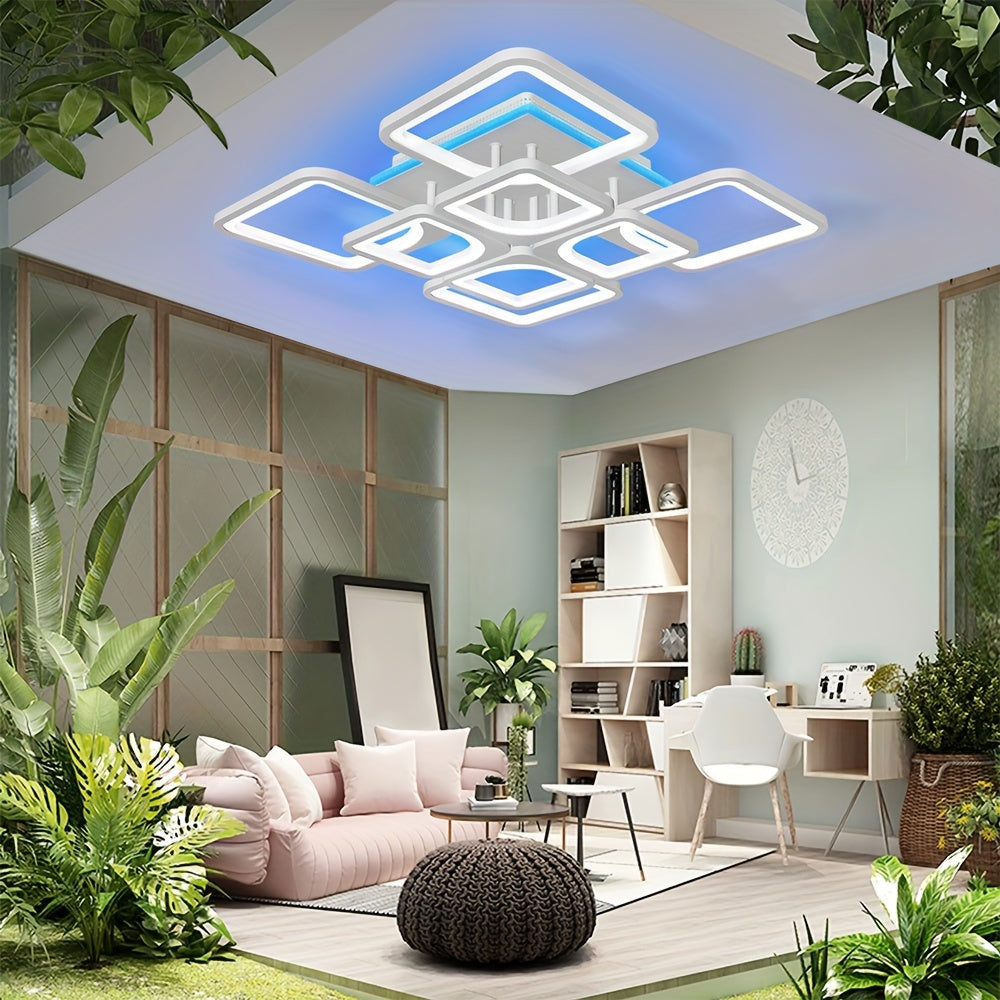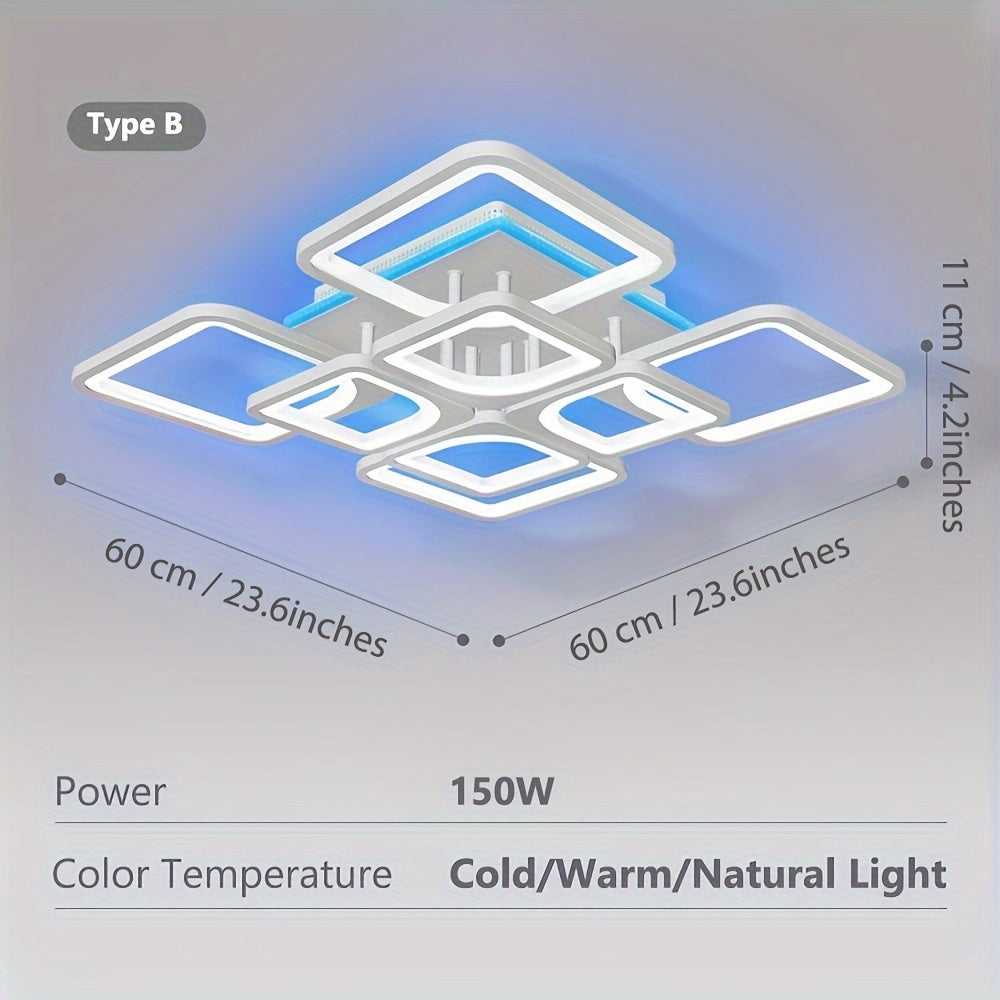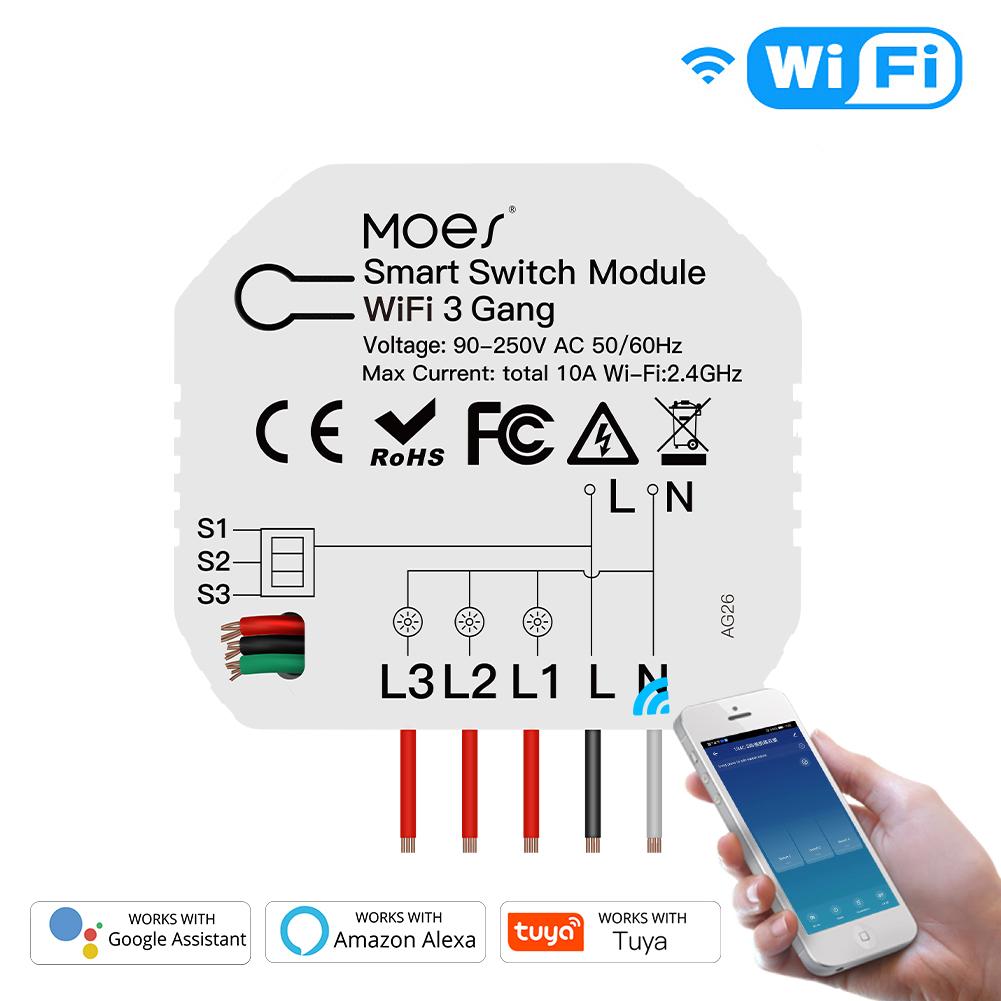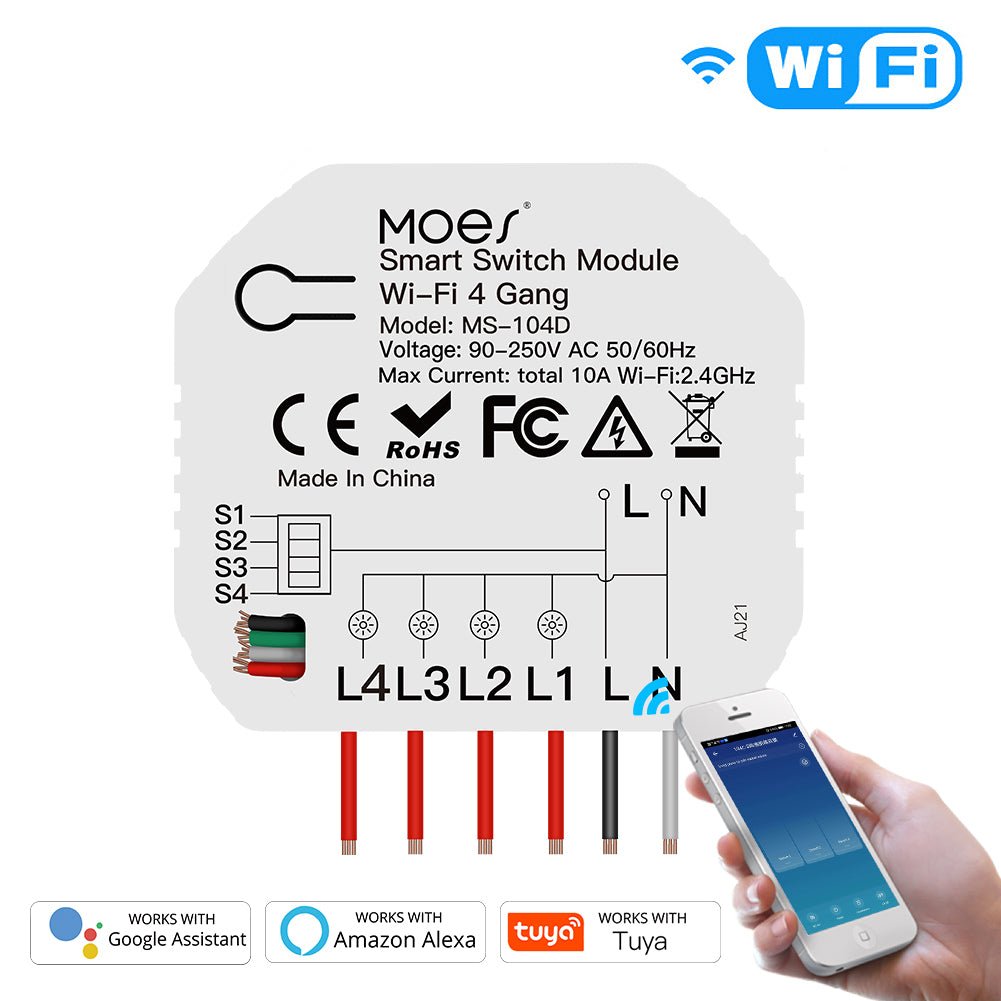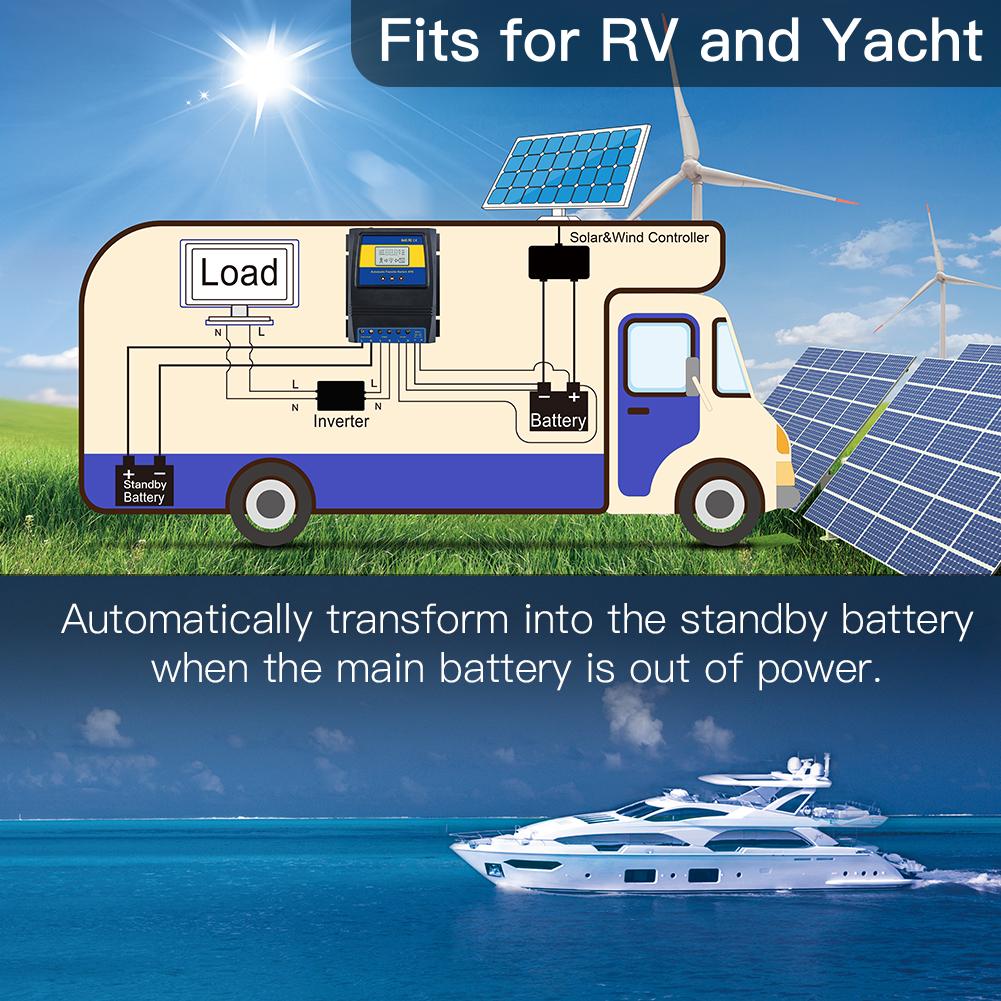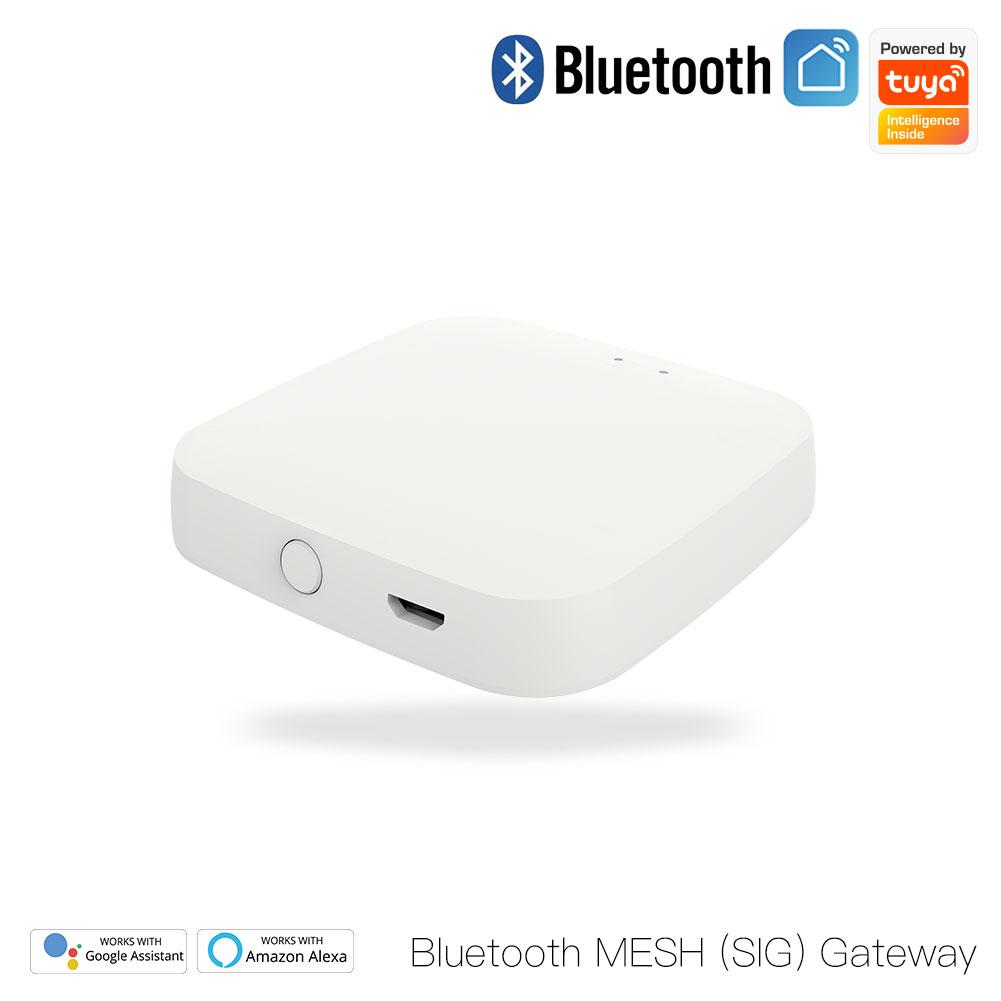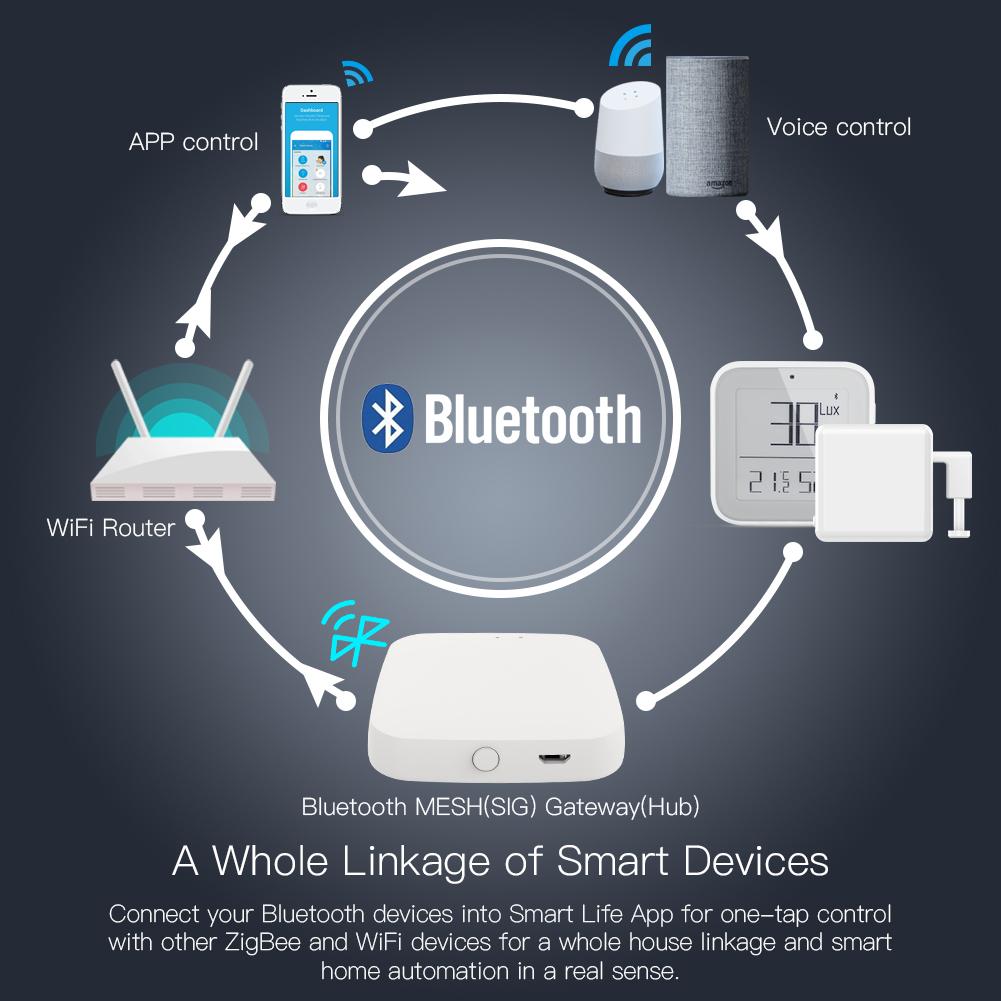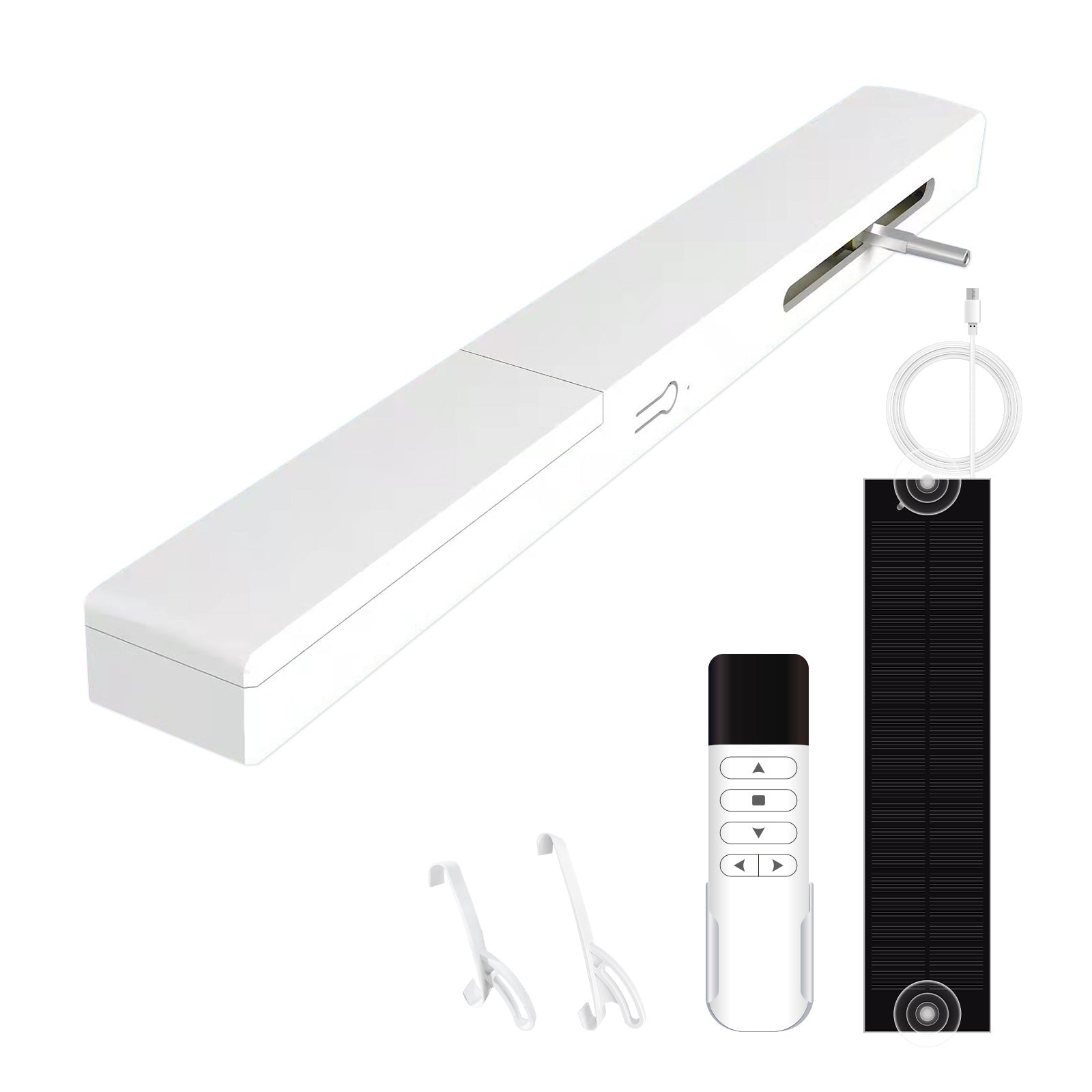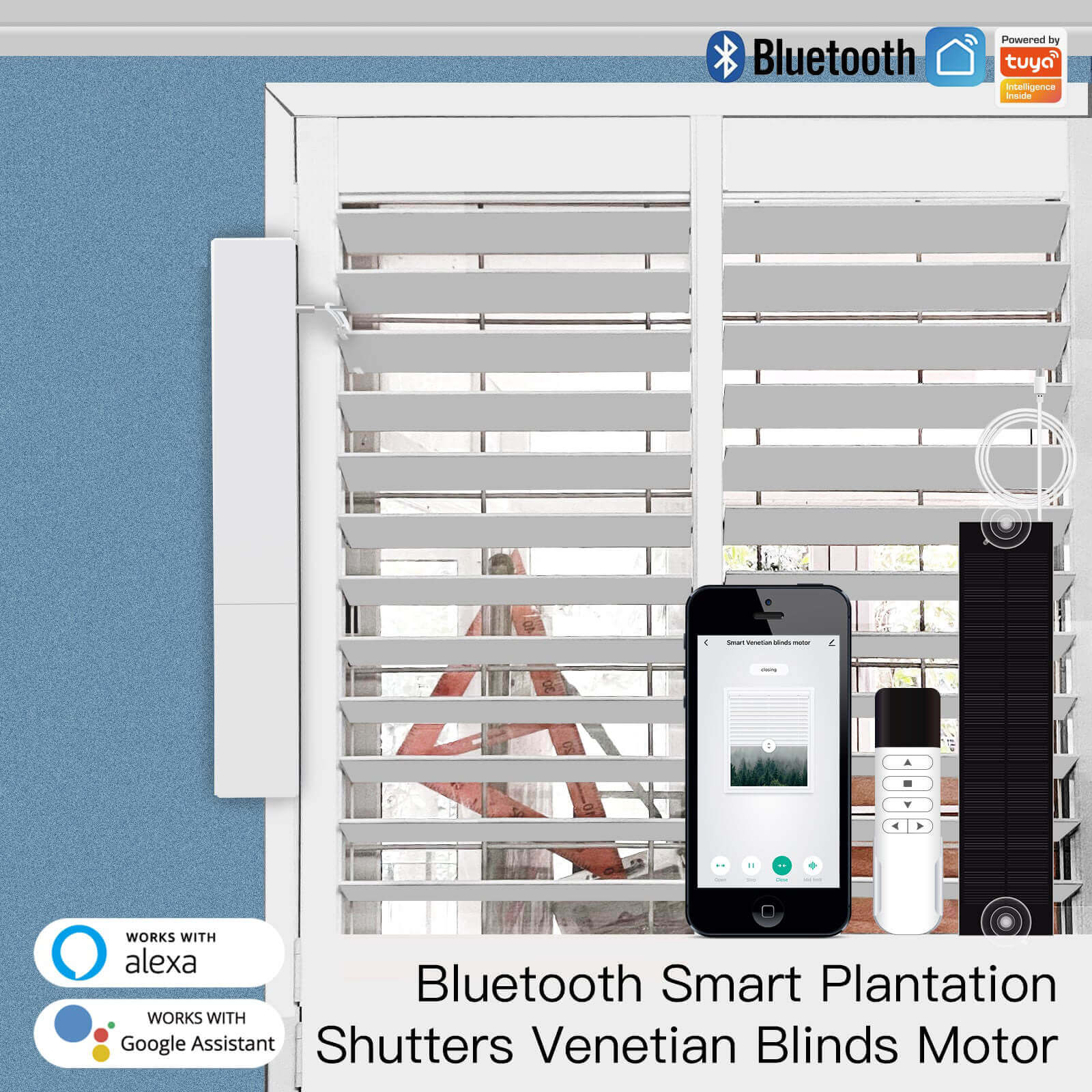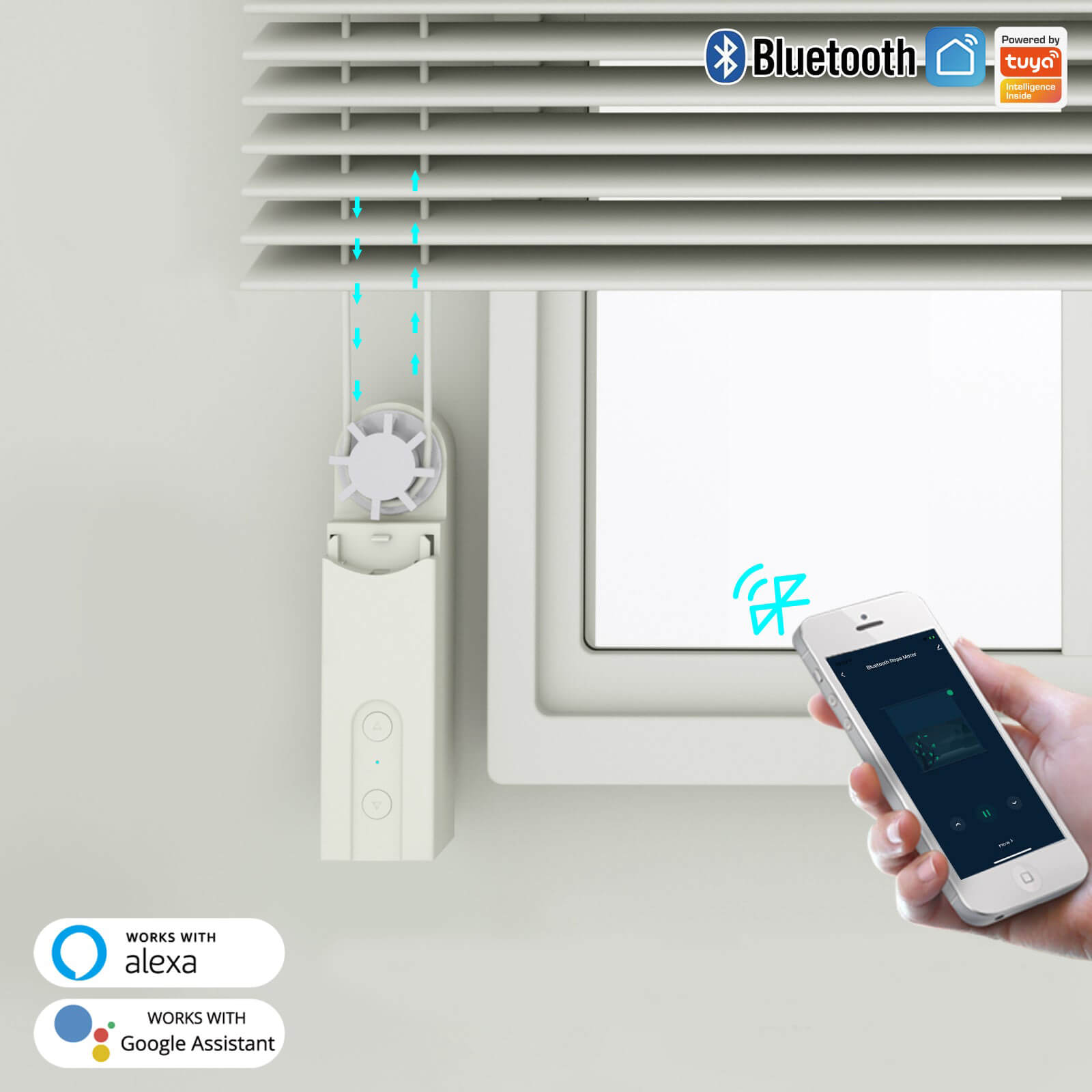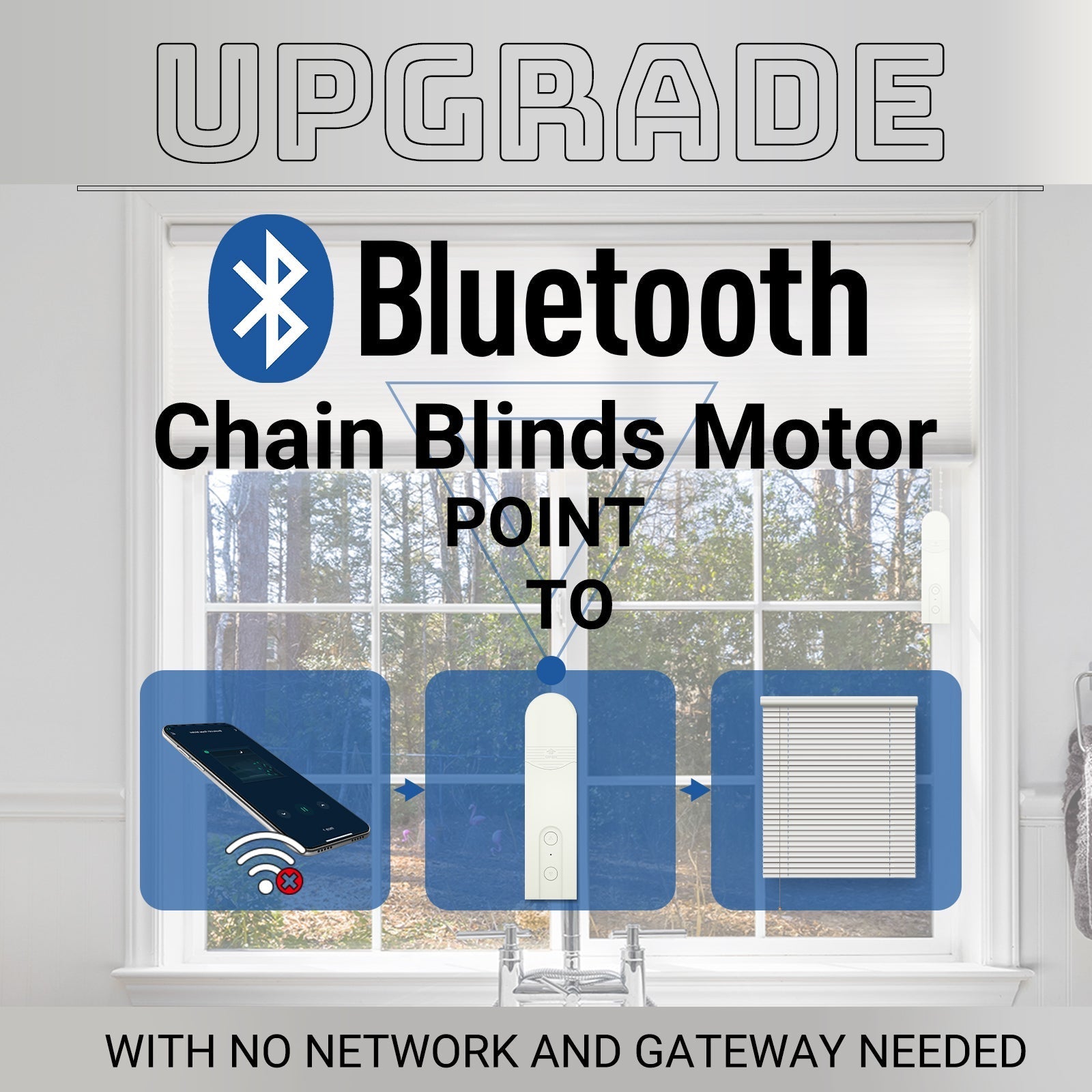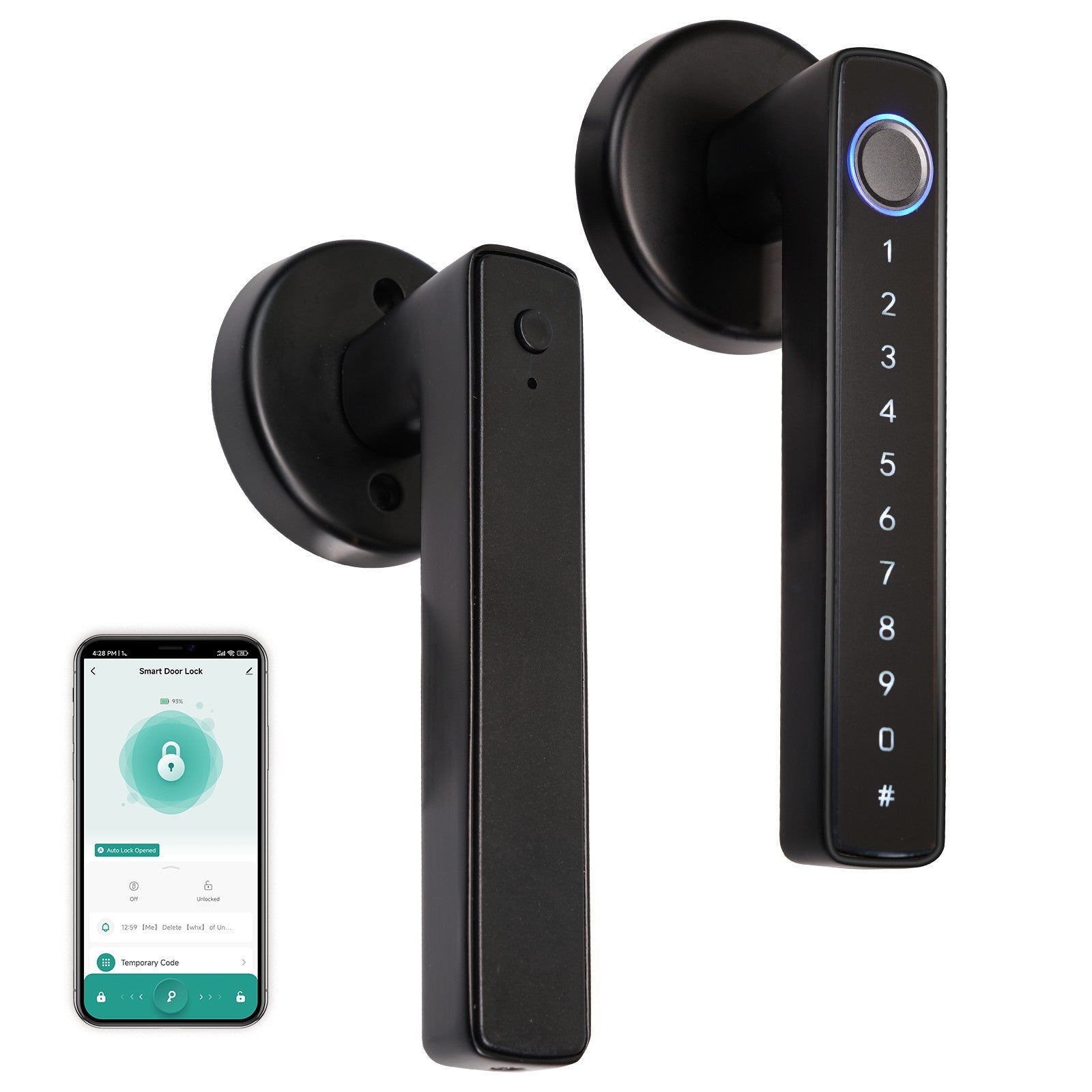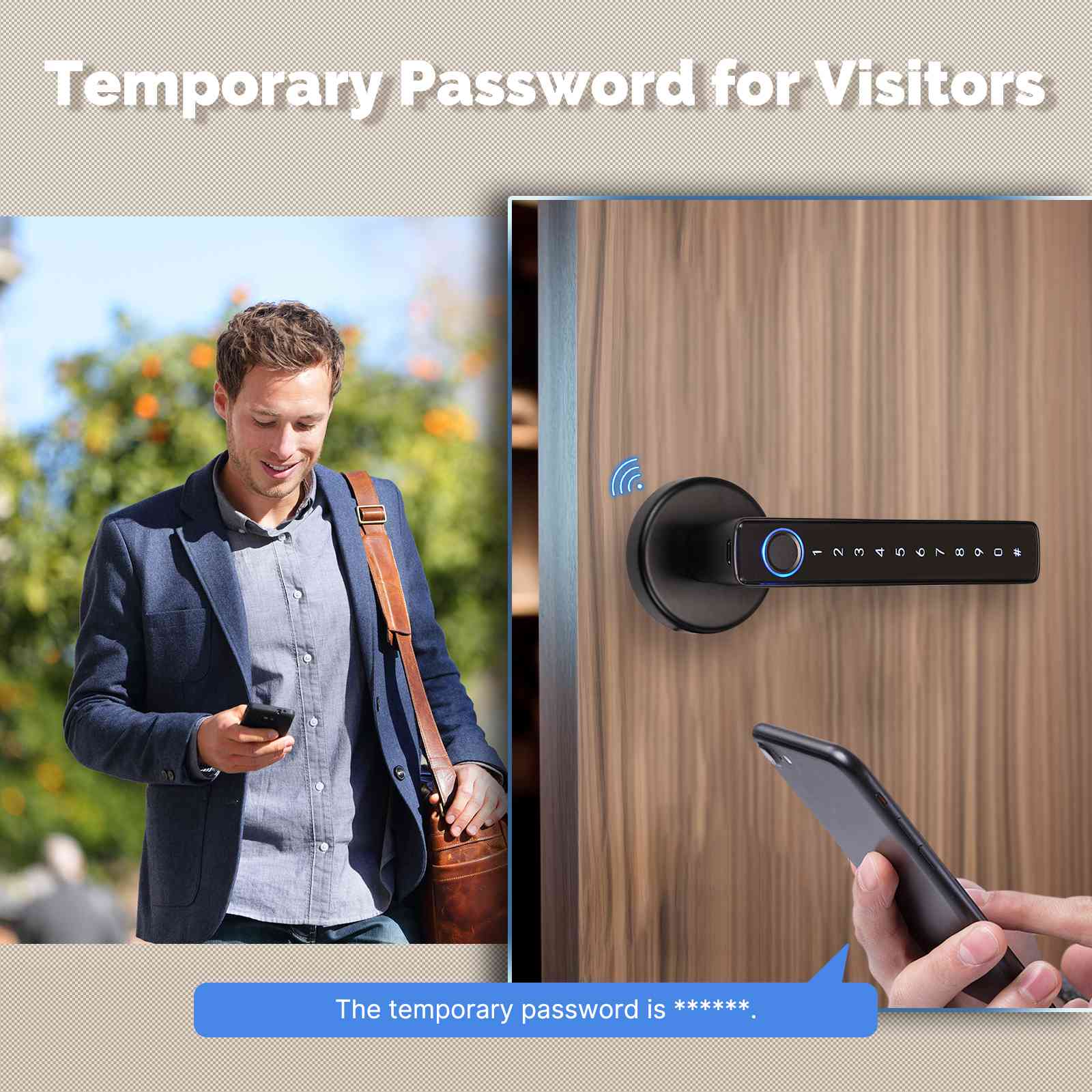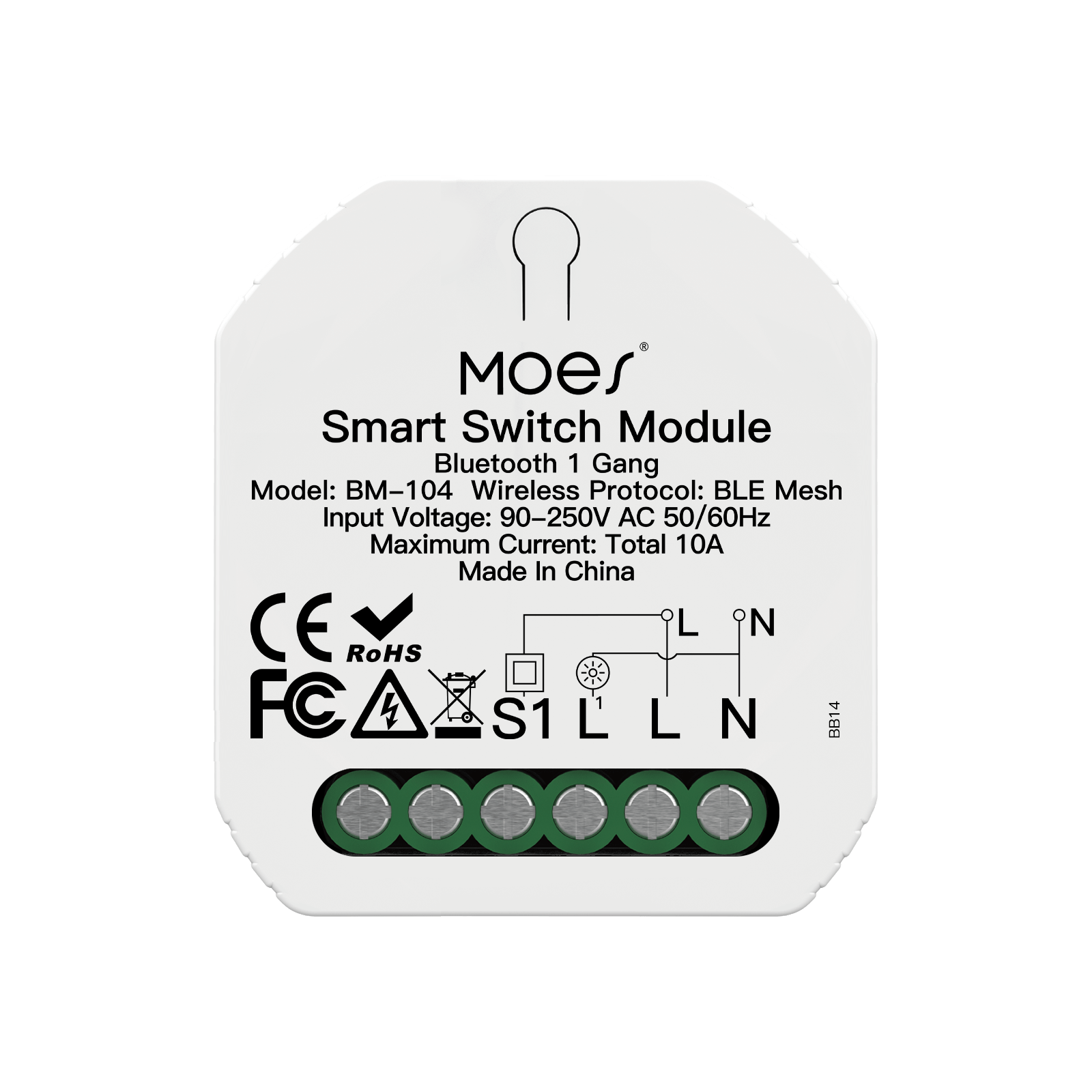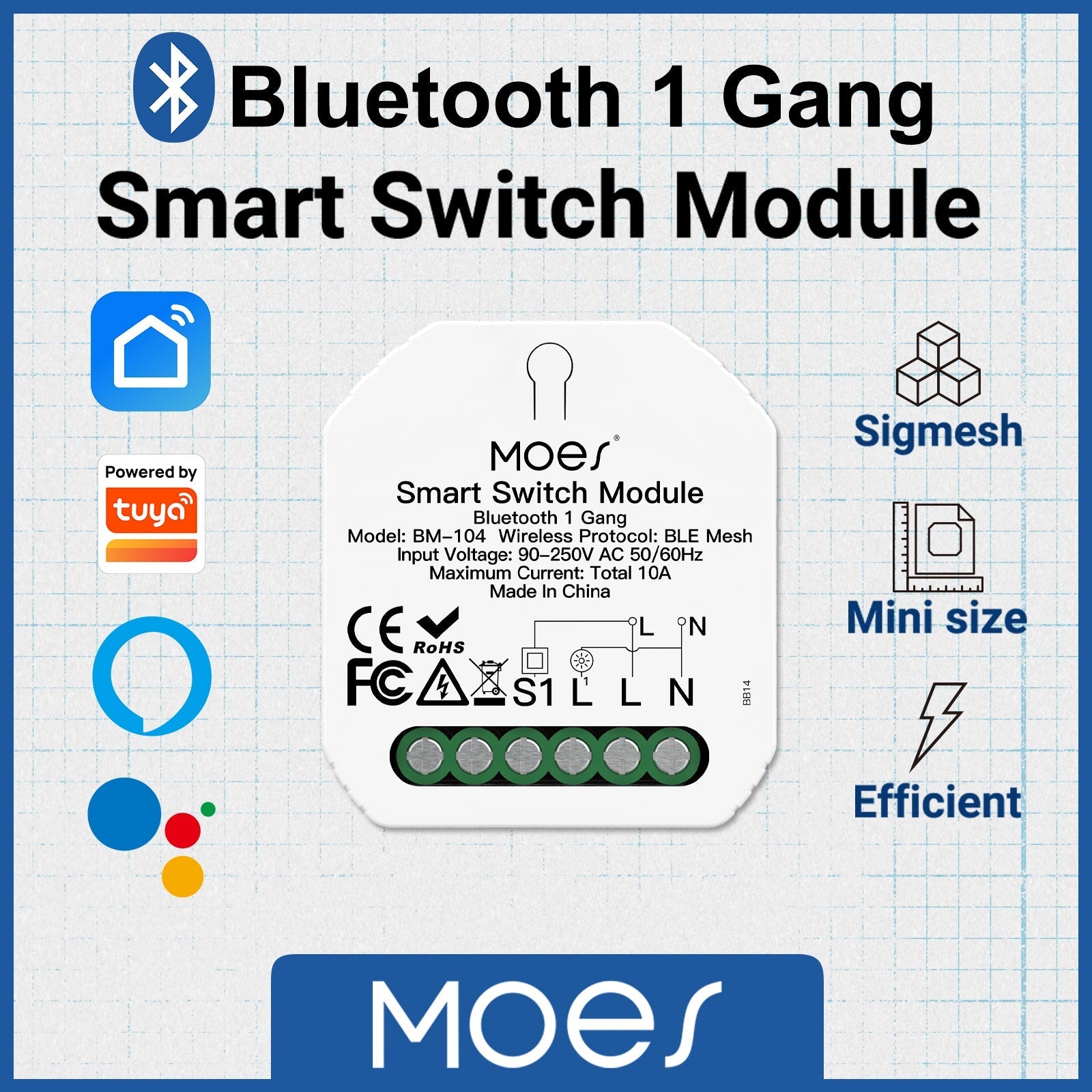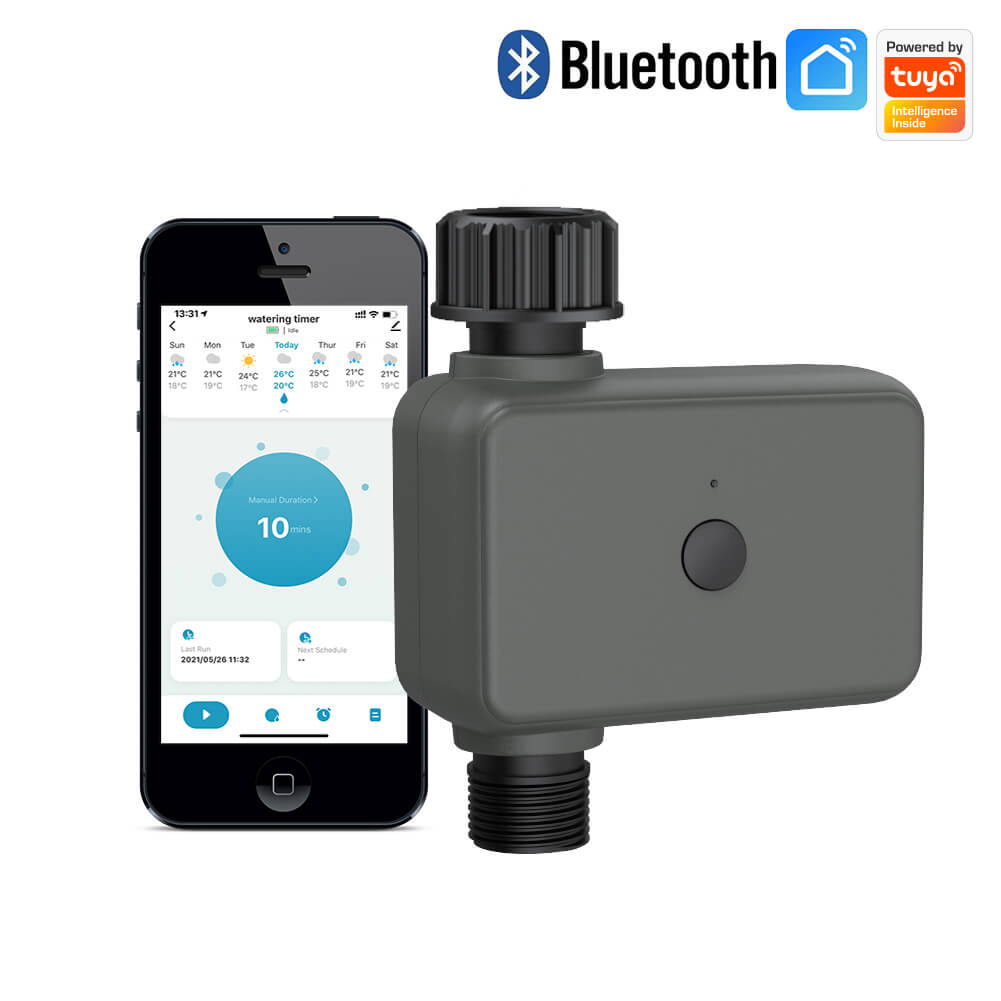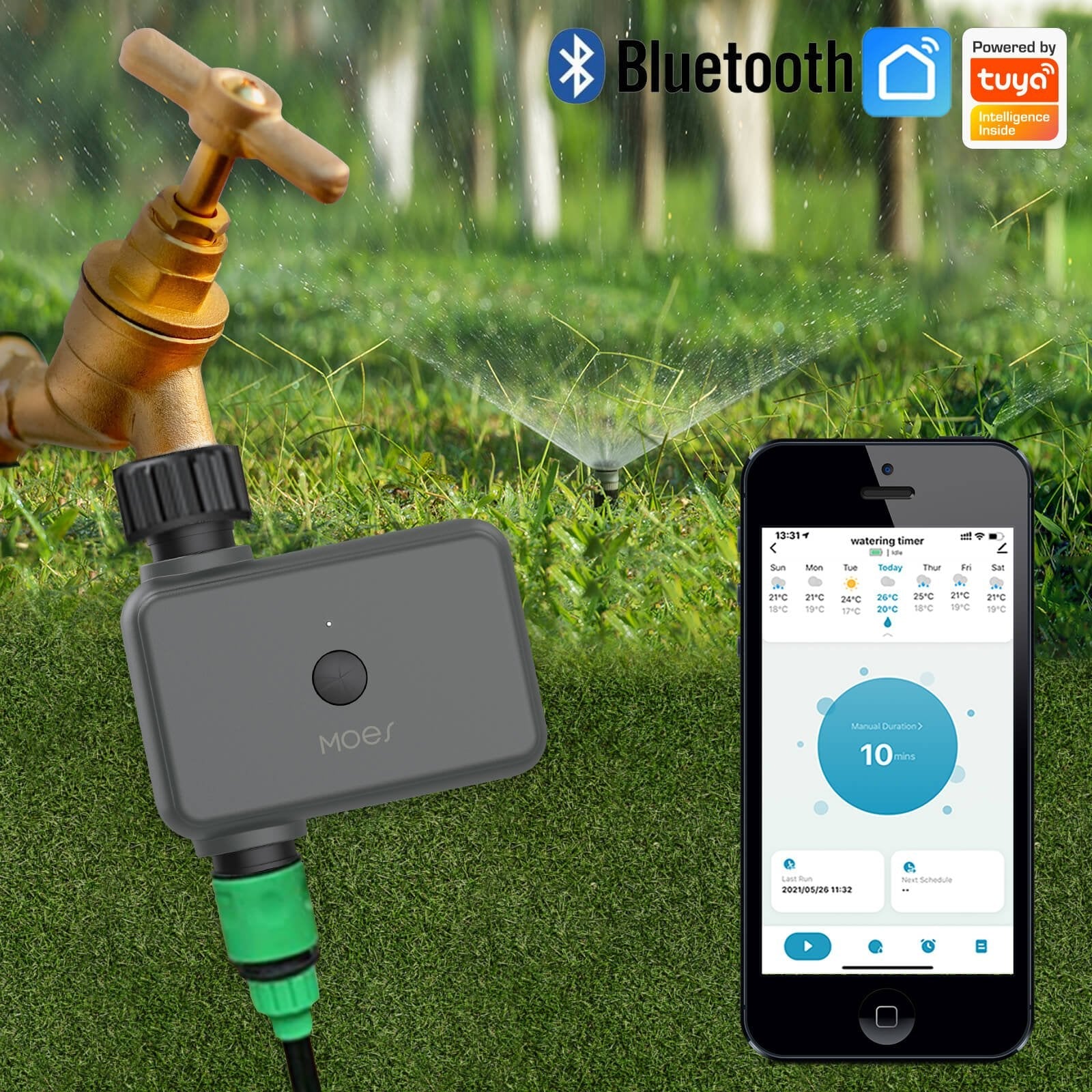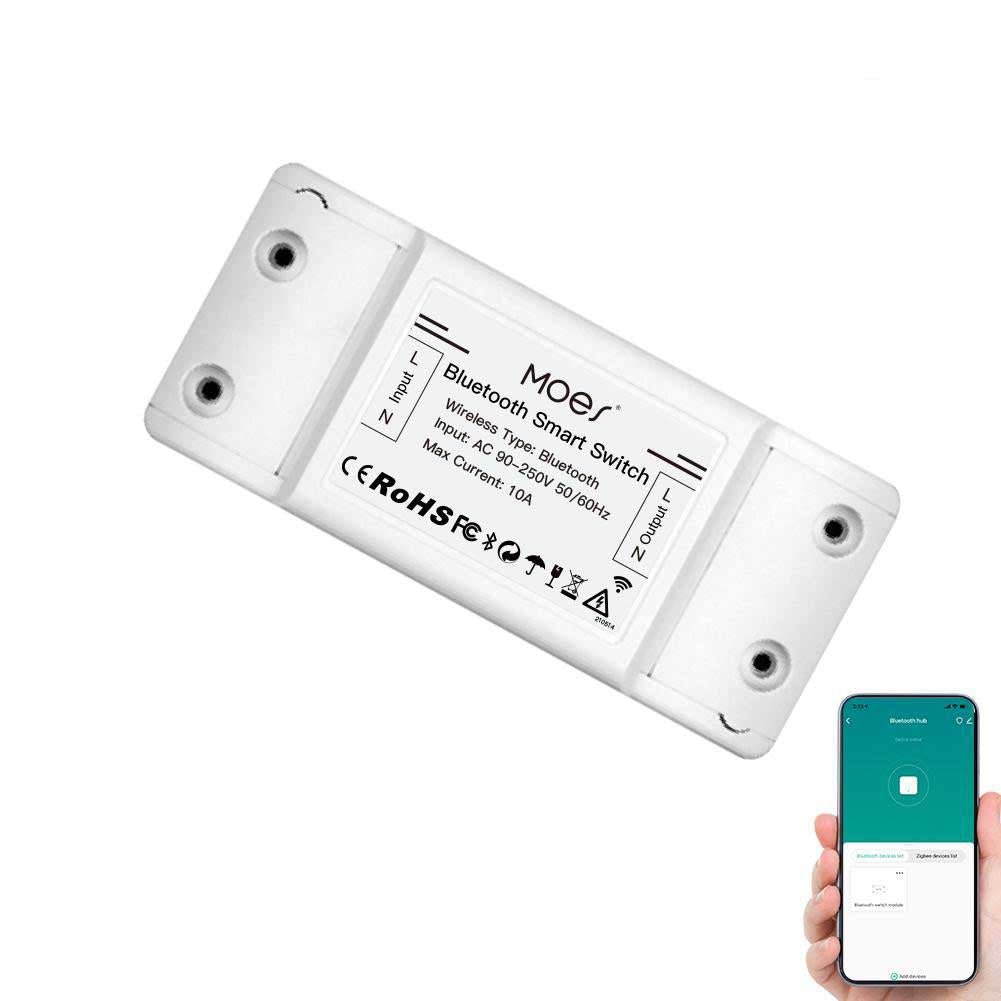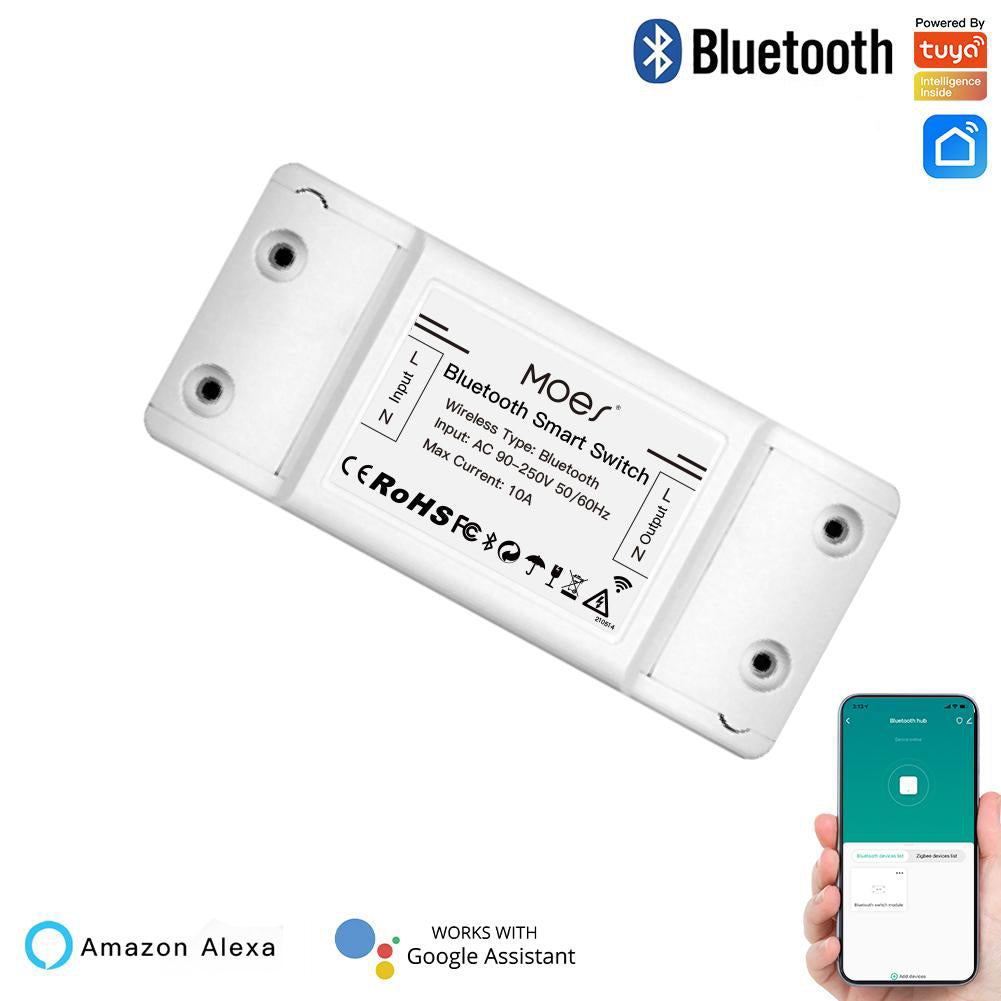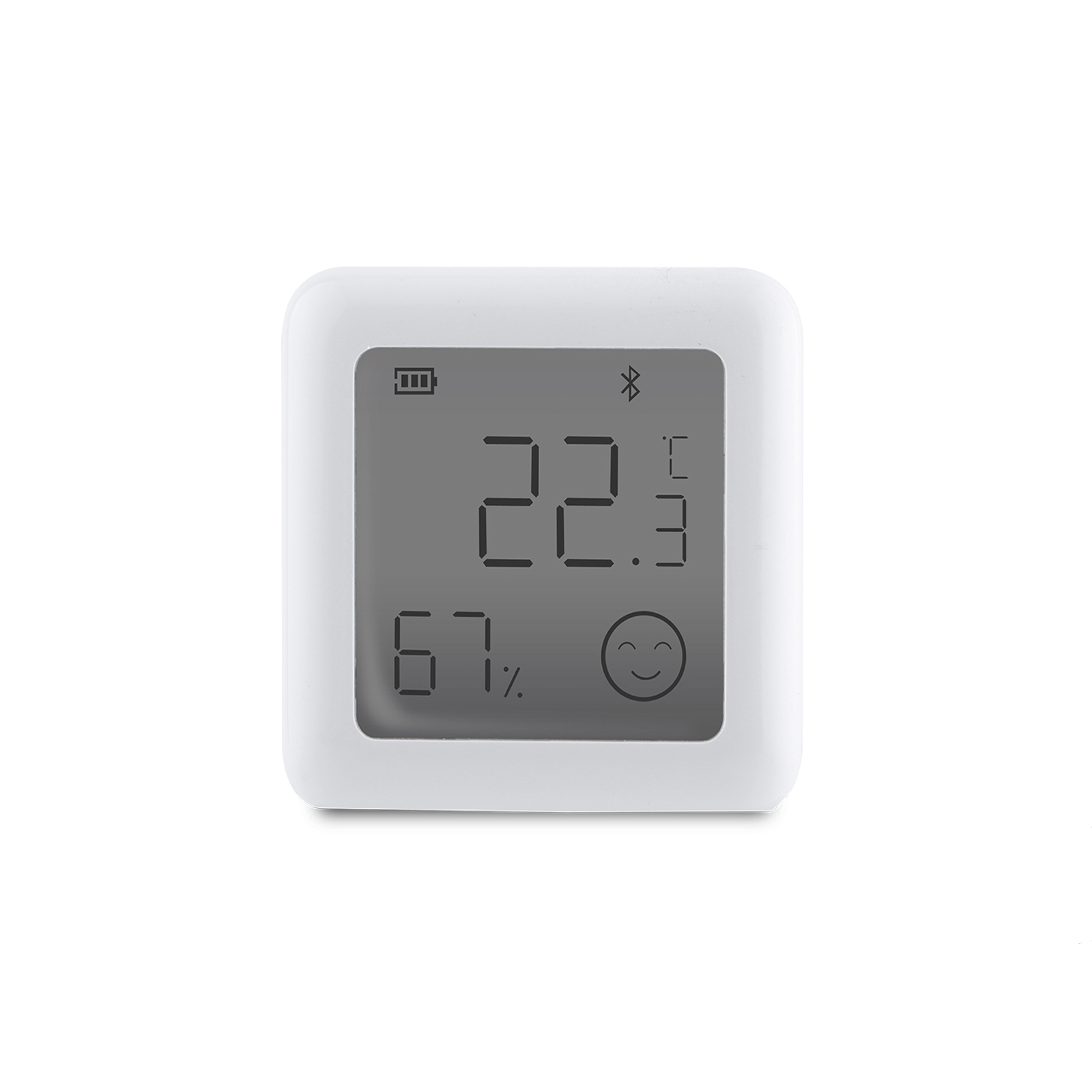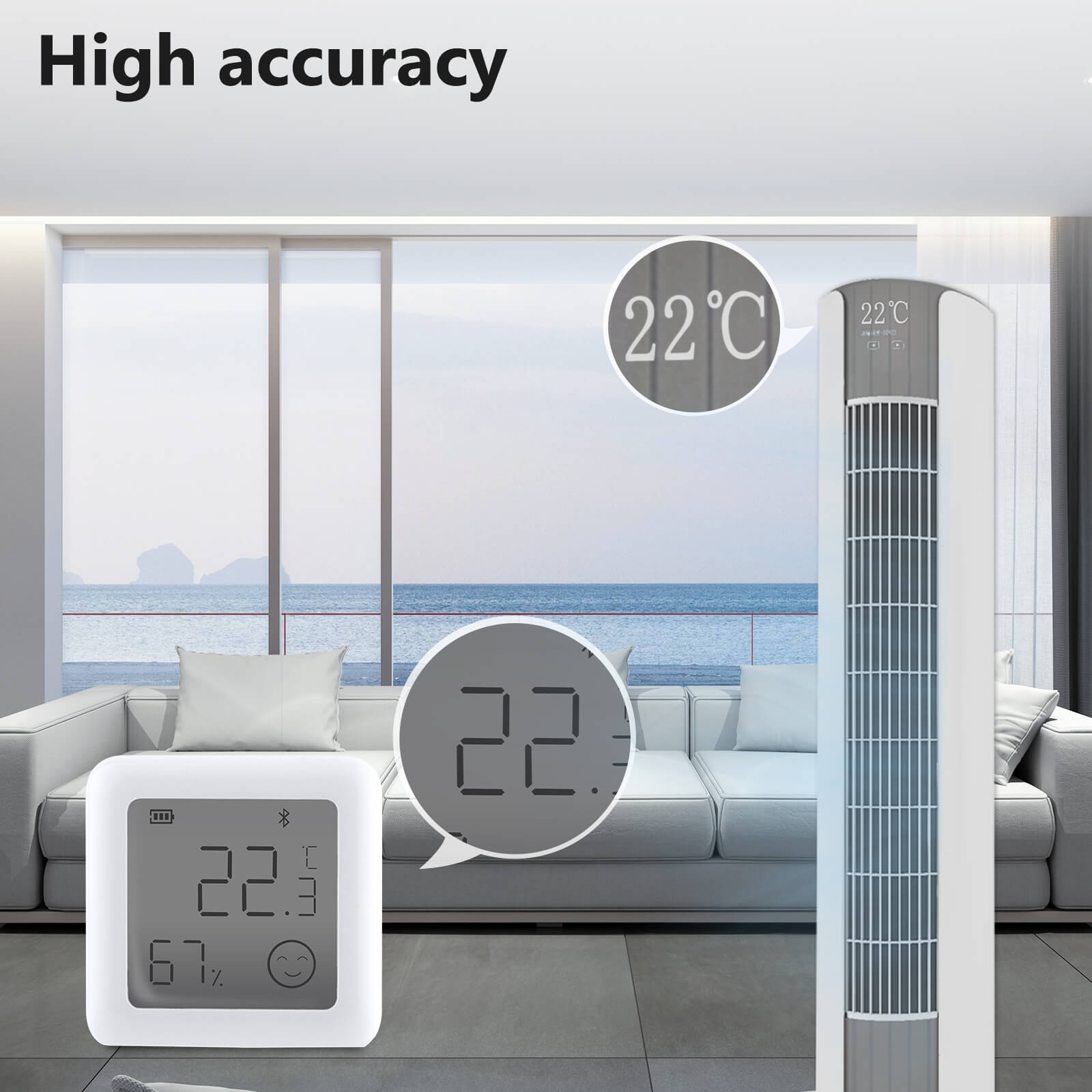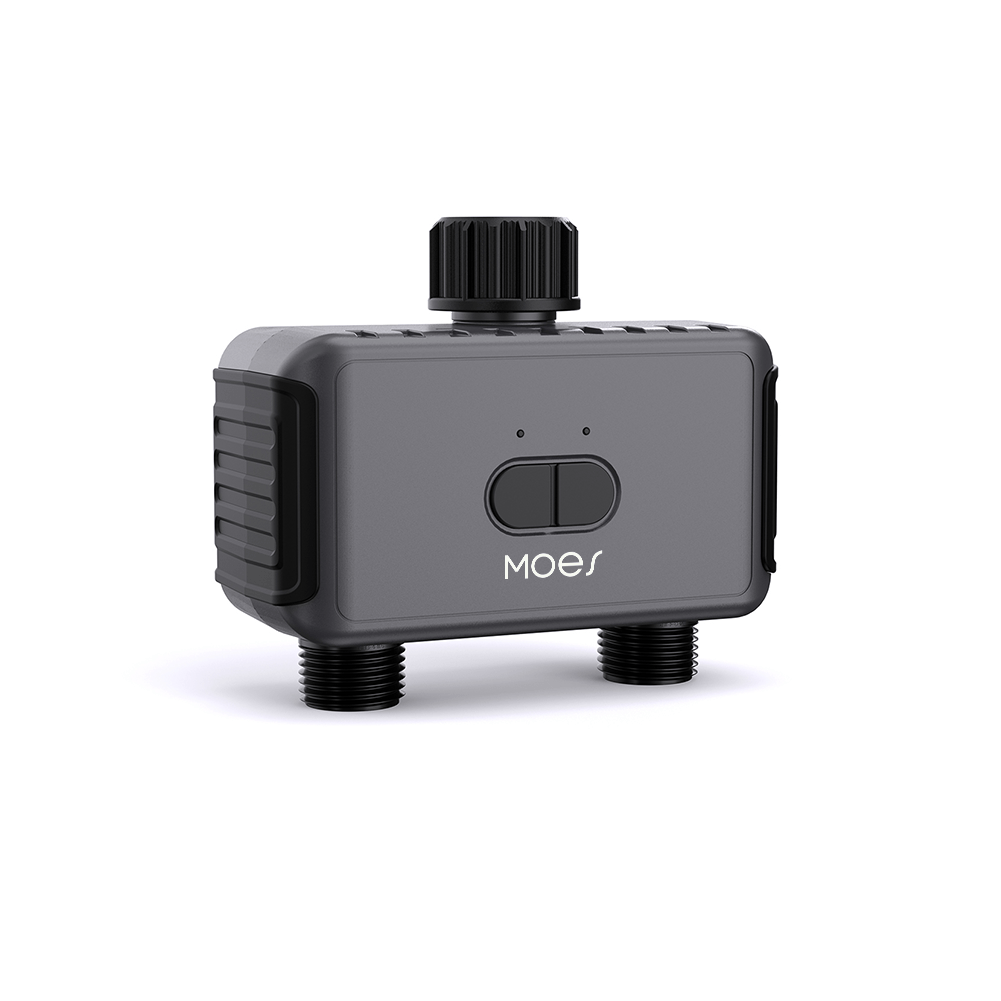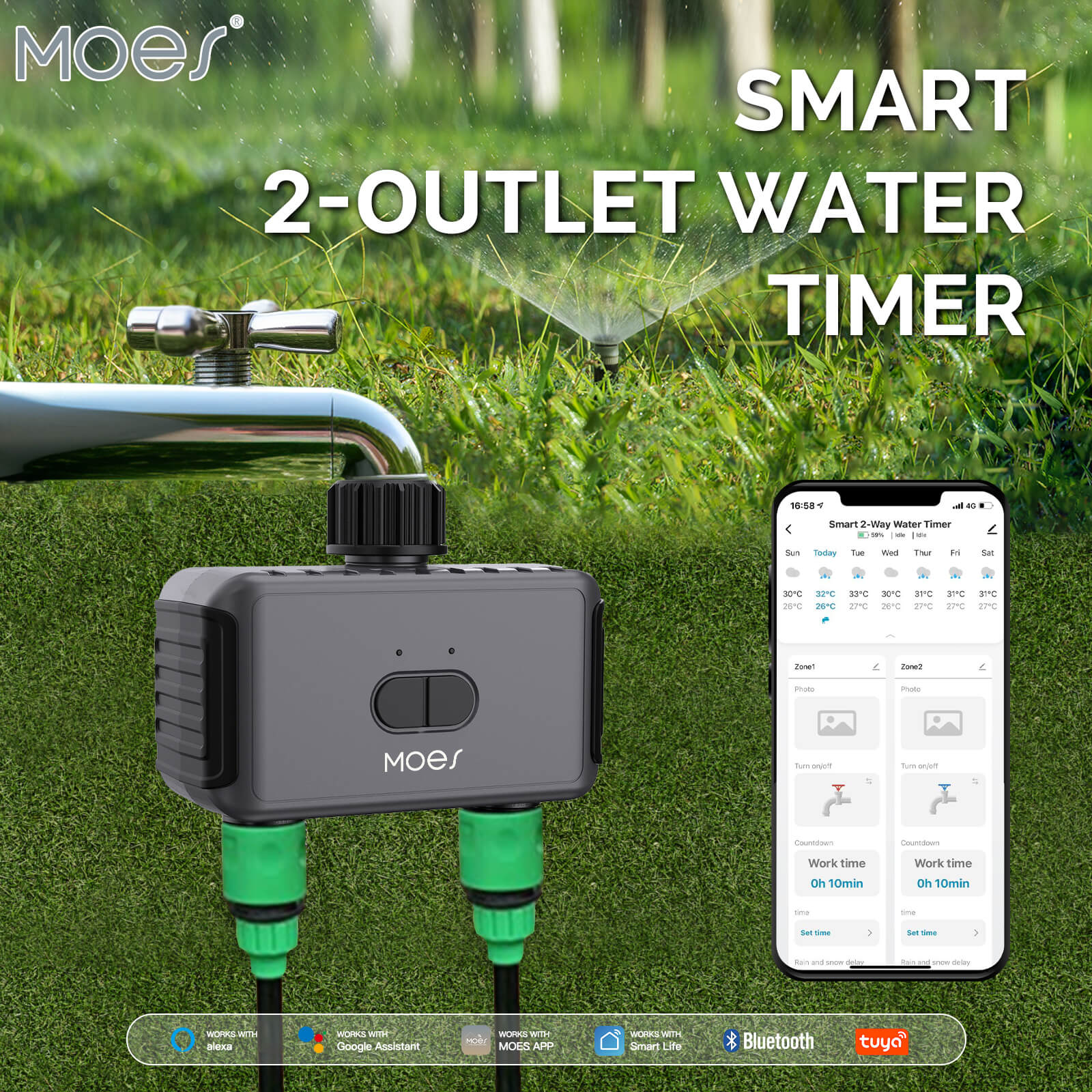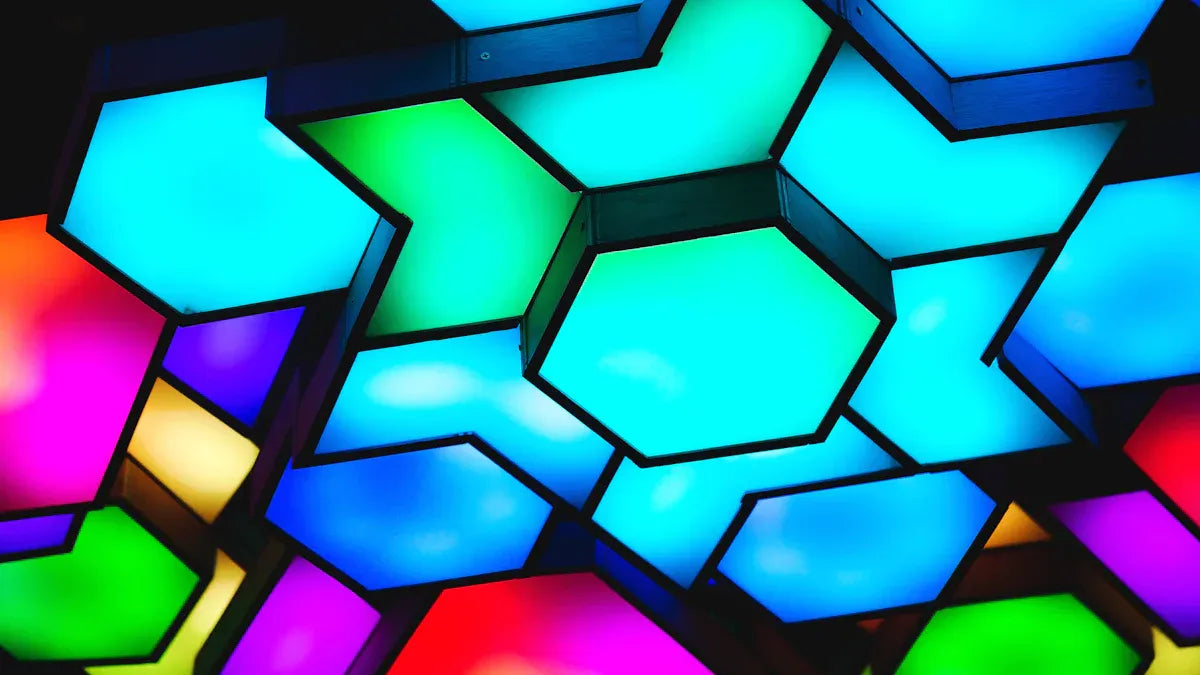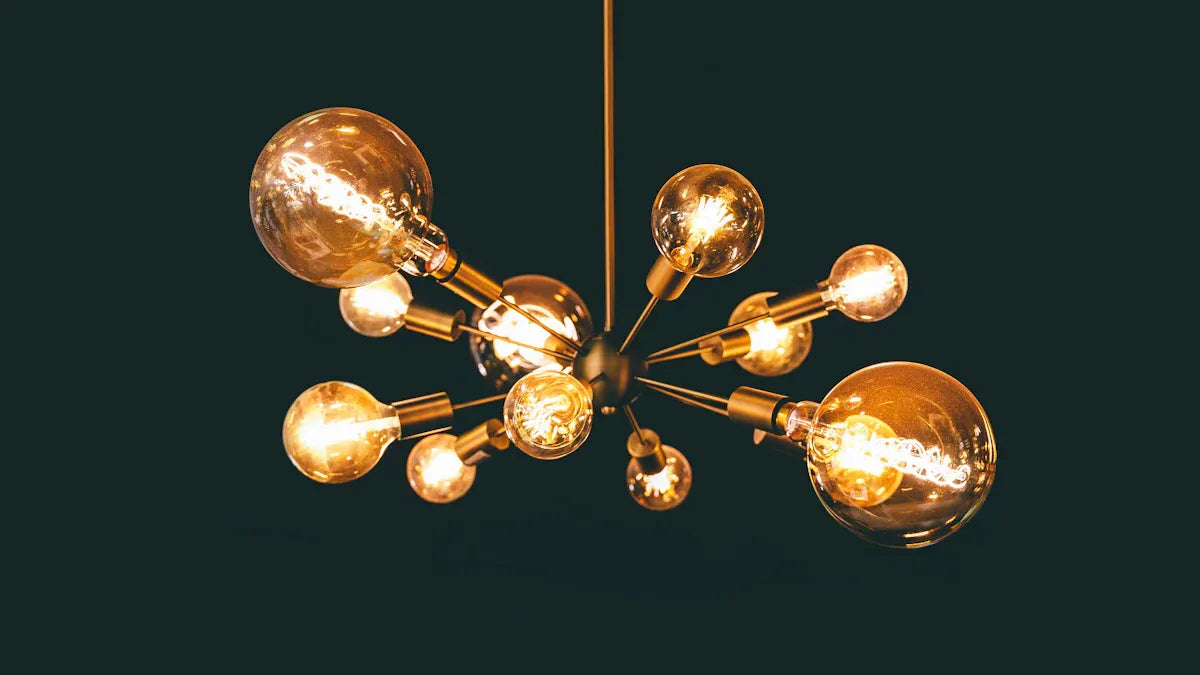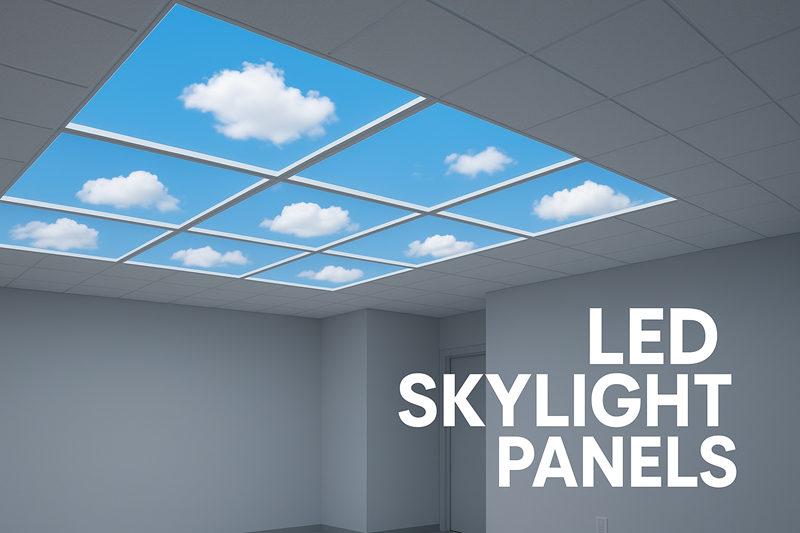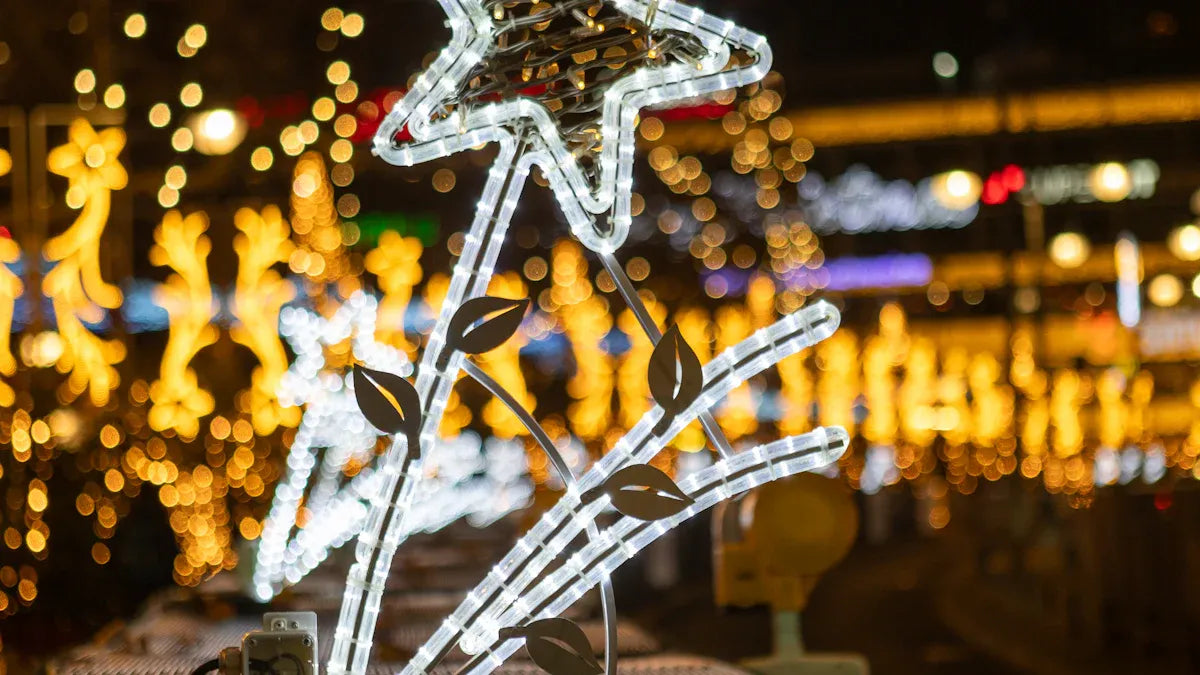Picture walking into a room where lights change with your mood, schedule, or even the weather. That’s the cool part of smart lighting in 2025. This tech isn’t just handy; it’s changing spaces and helping the planet.
-
The smart lighting market was worth $14.5 billion last year.
-
It’s expected to grow over 20% each year. By 2033, it might reach $80.4 billion, thanks to better LED tech and smart sensors.
-
Human-Centric Lighting (HCL) is getting popular. It shows how lights can boost health and help people work better.
Smart lamps now do more than just light up rooms. They save energy, improve lives, and make cities smarter.
Key Takeaways
-
Smart lighting is growing fast, with sales expected to hit $80.4 billion by 2033, thanks to better LED lights and smart sensors.
-
Human-Centric Lighting (HCL) helps people feel better by changing light to match natural body clocks, boosting health and focus.
-
IoT lets people control lights smarter, using apps or voice commands for easier use and saving energy.
-
Energy-saving smart bulbs can cut electricity use by up to 90%, helping save money and protect the planet.
-
New ideas like solar-powered and wireless lights are creating greener and cheaper lighting choices.
Overview of Smart Lighting Technology
What are smart lighting systems?
Smart lighting systems do more than just turn lights on or off. They let you change brightness, colors, and timing using apps, voice, or sensors. These systems connect to the Internet of Things (IoT), making them smarter and more useful. For instance, you can set lights to dim at bedtime or brighten in the morning.
The technology behind these systems is what makes them special. Different protocols like DALI, DMX, and CoAP help devices work together smoothly. Here’s a simple breakdown of these protocols:
|
Protocol |
What it does |
Why it’s good |
|---|---|---|
|
DALI |
Manages lights in buildings. |
Great for single systems. |
|
DMX |
Handles stage lights and effects. |
Fast and supports many devices. |
|
CoAP |
Built for IoT gadgets. |
Works well on small networks. |
These systems make smart lighting dependable and flexible for homes, offices, and public areas.
Why smart lamps are awesome
Smart lamps are the highlight of smart lighting. They’re not just about light; they make life easier and eco-friendly. Here’s why they’re great:
-
Energy savings: Smart LED lamps use 90% less energy than old bulbs. This helps lower your power bills.
-
Last longer: These lamps can last 15 times longer, so you replace them less often.
-
Custom settings: Change brightness, colors, and temperature to fit your mood or task.
-
Eco-friendly: They cut down on carbon emissions and support green goals.
Some smart lamps also have motion sensors and daylight features. These tools make sure lights only work when needed, saving even more energy.
How smart lighting has changed
Smart lighting has improved a lot over time. It started with basic LED bulbs and now includes advanced tech. With IoT, lighting has become a connected system you can control from anywhere. Over the years, companies have worked to make lighting greener and easier to use.
A big change is the rise of human-centric lighting. This type of lighting matches your body’s natural rhythm, helping you sleep, feel better, and work smarter. Sustainability is another focus. Companies now make energy-saving and recyclable products to protect the planet.
The progress in smart lighting shows how technology can turn everyday items into tools for better living.
Hottest Lighting Trends for 2025
IoT integration in smart lighting
Think about lights that know when to turn on or dim. That’s what IoT in smart lighting does. It connects lights to the Internet of Things (IoT) for smarter control.
With IoT, you can manage lights using your phone or voice. It’s not just easy—it makes your home feel more personal. For example, lights can copy daylight during the day and switch to warm tones at night.
The smart lighting market is growing fast. It’s expected to rise from $18.09 billion in 2024 to $21.23 billion in 2025, growing by 17.4%. Companies like Philips are making energy-saving bulbs like Ultra Efficient LEDs. IoT lighting isn’t just useful—it adds style to your home.
AI-driven customization and human-centric lighting
What if your lights could match your mood or schedule? AI-driven lighting makes this happen. It learns what you like and adjusts lights automatically. Bright lights help you work, while soft lights help you relax.
Human-centric lighting goes even further. It works with your body’s natural clock to improve health and focus. For example, special LEDs can mimic sunrise to wake you up or cooler tones to keep you alert.
Studies show these systems make people happier and more comfortable. For instance:
|
Study |
Findings |
Benefits |
|---|---|---|
|
Juslén et al. (2007) |
AI lighting boosts mood and focus |
Comfort, productivity |
|
Van Den Wymelenberg and Inanici (2014) |
User control improves lighting experience |
Comfort, control |
|
Cheng et al. (2016) |
AI uses feedback for better lighting |
Satisfaction, feedback use |
With AI and human-centric lighting, your lights create a space that feels perfect for you.
Motion-sensing and adaptive lighting systems
Imagine walking into a room, and the lights adjust by themselves. Motion-sensing lights make this possible. They use sensors to detect movement and change brightness based on need.
This tech isn’t just cool—it saves energy. Adaptive lights only turn on when needed, cutting waste. They’re popular in green buildings aiming for certifications like LEED.
These systems are in high demand. They’re common in homes and offices where saving energy matters. By combining automation with energy tracking, motion-sensing lights make spaces smarter and greener.
Integration with smart home ecosystems
Think about coming home, and your lights change to your favorite settings. That’s the power of connecting smart lighting with smart home systems. It’s not just cool—it makes life easier and more fun.
Why integration is important
When smart lights connect with other devices, they form a team. This teamwork lets them talk and work together. For example:
-
Voice control: Use Alexa, Google Assistant, or Siri to manage lights with words.
-
Automation: Create routines like lights turning on when your door unlocks.
-
Energy efficiency: Match lights with smart thermostats to save energy when rooms are empty.
Pro Tip: New to smart homes? Start small. Link your lights to a voice assistant and try simple routines. You’ll see how quickly it changes your space!
Popular smart home platforms
Many platforms help you connect smart lighting at home. Here’s a quick guide to some top ones:
|
Platform |
Key Features |
Why You’ll Like It |
|---|---|---|
|
Amazon Alexa |
Voice commands, routines, and skills |
Easy to set up and widely compatible |
|
Google Home |
Voice control and smart routines |
Great with Google services |
|
Apple HomeKit |
Privacy-focused and secure system |
Best for Apple device users |
|
Samsung SmartThings |
Advanced automation and controls |
Ideal for tech-savvy users |
Each platform has unique features, so pick one that suits your needs.
Real-life examples
Imagine hosting a movie night. With one command, dim the lights, close blinds, and start your sound system. Or wake up to lights slowly brightening with your alarm. These are just some ways smart lighting improves daily life.
It’s not just for homes. Offices use it for better workspaces, and hotels give guests custom lighting experiences.
The future of smart home integration
As tech improves, integration will get even smarter. Devices will connect faster, work better together, and offer more features. The goal is to make homes smarter, greener, and easier to use.
Ready to upgrade your smart home? Start by adding smart lighting to your system. Soon, you won’t know how you lived without it!
Innovations to Watch
Solar-powered smart lamps
Think about lighting your home or yard without paying for electricity. Solar-powered smart lamps make this easy. They soak up sunlight during the day and shine at night. These lamps are not only good for the planet but also cost less and need little upkeep.
The solar lighting market is growing fast. It could jump from $2.4 billion in 2023 to $5.0 billion by 2032. This shows how people are choosing renewable energy and caring for the Earth. Solar-powered LEDs last a long time, up to 50,000 hours. You won’t have to replace them often. They also cut carbon emissions by using clean energy instead of fossil fuels.
Tip: Want an eco-friendly option? Solar-powered lamps save money and help the environment.
These lamps work great outdoors, like in gardens or driveways. They’re also becoming popular in smart cities where saving energy matters.
Voice-activated and gesture-controlled lighting
Wish you could control lights without touching anything? Voice-activated and gesture-controlled lighting makes it possible. You can say “Turn on the lights” or wave your hand to change brightness.
This tech is super handy. It’s great when your hands are busy or you’re far away. Systems like Alexa, Google Assistant, and Siri make voice control simple. Gesture control adds a cool, futuristic feel, letting you interact with lights in new ways.
Pro Tip: Combine voice-activated lighting with smart home setups for easy use. You’ll enjoy how it changes your space.
These systems aren’t just for homes. Businesses and public places use them to make spaces more accessible and energy-efficient. They’re helping create smarter environments.
Health-focused lighting trends 2025
Lighting now does more than just brighten rooms. It’s being used to improve health. Health-focused lighting trends in 2025 aim to help people sleep better, work smarter, and feel good.
Human-centric lighting is leading this change. It copies natural light patterns to match your body’s needs. For example, cooler light keeps you awake during the day, while warmer light helps you relax at night. Mood lighting also helps by creating calming or energizing spaces based on what you need.
Studies show lighting affects how you feel and focus. Smart systems now use AI to adjust lights to fit your schedule. This gives you the right light at the right time, making you more comfortable and productive.
Note: Health-focused lighting isn’t just for homes. Schools and offices use it to boost focus and well-being.
With durable LEDs and smart AI, these ideas are changing lighting. They don’t just make spaces brighter—they make lives better.
Wireless and battery-free lighting solutions
Think about lights that don’t need wires or batteries. Sounds amazing, right? This is becoming real! Wireless and battery-free lighting is changing how we use energy. These lights get power from things like sunlight or vibrations. They’re not only cool but also eco-friendly and save money.
How do they work? These lights use energy harvesting. This means they collect power from their surroundings instead of batteries. For example, some use solar panels to gather sunlight. Others turn vibrations into energy. Once powered, they connect wirelessly using tech like NFC (Near Field Communication) or BLE (Bluetooth Low Energy).
Here’s a simple look at the trends and tech behind this idea:
|
Key Trends |
What’s Happening |
|---|---|
|
Wireless Sensor Networks |
Sensors now use wireless tech more often. |
|
Energy Harvesting Advances |
Sensors collect power from light or vibrations. |
|
AI and ML Integration |
AI helps sensors work smarter and adapt better. |
|
Sustainability Efforts |
Governments support battery-free tech to cut waste. |
|
Technology |
What It Does |
|---|---|
|
NFC |
Helps sensors communicate without batteries. |
|
BLE |
Makes wireless systems use less energy. |
|
Ultra-low-power Chips |
Used in healthcare and automation industries. |
Why does this matter? These lights are great for places where wiring is hard, like gardens or old buildings. They also reduce waste since no batteries are needed. Plus, they help create smarter, greener cities.
Tip: Want to upgrade your lights? Try wireless ones. They’re good for the Earth and save you money!
Wireless and battery-free lighting isn’t just a cool idea. It’s a big step toward a greener and smarter future. Are you ready to try it?
Applications Across Industries
Residential smart lighting applications
Smart lighting is making homes cozier and more energy-efficient. Imagine lights that brighten like the sunrise to wake you up. Or picture your living room lights dimming automatically for movie night. These cool features are now possible with smart lighting.
The demand for residential smart lighting is growing fast. In 2022, indoor lighting made up 65.5% of sales. Smart lamps were also popular, holding 56.9% of the market in 2020. This shows how much people love these smart solutions.
Tip: Start small by adding smart bulbs to your bedroom or kitchen. You’ll quickly see how they save energy and make life easier!
Smart lighting isn’t just about saving power. It also makes your home feel special. You can change brightness, colors, and schedules using your phone or voice. It’s like having a helper that knows exactly what you want.
Commercial and retail lighting trends
In businesses, smart lighting does more than just light up spaces. It boosts productivity and improves customer experiences. For example, H&M Trucking used Human-Centric Lighting (HCL) to make workers happier and more efficient. This proves how good lighting can make a big impact.
The commercial lighting market is growing fast. By 2030, it could reach $27.38 billion. Studies show 68% of workers feel more appreciated when their workplace has good lighting. This highlights how lighting creates better work environments.
Hotels and stores are also using smart lighting. For instance:
-
Hotel Xcaret: Added custom lighting controls in rooms for guests.
-
Dubai Mall: Used OSRAM LEDs to create a stunning look.
In commercial spaces, smart lighting isn’t just about looks. It helps create places that are welcoming and efficient.
Public spaces and smart streetlights
Smart streetlights are changing cities. They do more than just light up roads. They improve safety, manage traffic, and support eco-friendly goals.
Modern streetlights use IoT and adaptive lighting. They adjust brightness based on activity, saving energy and improving visibility. Cities like Chicago and London already use these systems, turning streetlights into smart city tools.
Here’s what smart streetlights can do:
-
Improve safety: Better lighting and built-in cameras for security.
-
Support sustainability: Use solar power and adjust brightness to save energy.
-
Help urban planning: Provide data for traffic and resource management.
Smart streetlights are key to building smarter, greener cities. They’re not just lights—they’re a step toward a better future.
Industrial lighting innovations
Industrial lighting is changing quickly to make workplaces smarter. Factories, warehouses, and plants now use lights for more than just brightness. These systems save energy, lower costs, and improve work efficiency.
A major improvement is energy-efficient LED systems. These lights use 75% less energy than older ones. This is great for cutting power bills and meeting strict environmental rules. They also last longer, so you replace them less often.
Smart lighting systems are also becoming popular. Features like daylight harvesting adjust light levels using natural sunlight. This avoids wasting energy while keeping spaces bright. Systems with occupancy detection and scheduling only turn on lights when needed. This can reduce energy use by 65-75%.
Here’s a simple comparison of maintenance methods and their benefits:
|
Maintenance Approach |
Downtime Hours/Year |
Costs ($/Fixture/Year) |
Energy Waste (%) |
Labor Hours |
ROI Period |
|---|---|---|---|---|---|
|
Reactive Maintenance |
24.7 |
$78.50 |
18.3% |
4.2 |
N/A |
|
Scheduled Maintenance |
12.3 |
$62.40 |
9.7% |
3.8 |
2.1 years |
|
Basic Smart Monitoring |
8.5 |
$43.20 |
6.2% |
2.5 |
1.7 years |
|
Advanced Predictive Analytics |
3.1 |
$31.80 |
2.4% |
1.3 |
1.2 years |
|
Full IoT Integration |
1.4 |
$27.50 |
1.1% |
0.8 |
0.9 years |
Tip: Want the best results? Choose systems with advanced predictive analytics or full IoT integration. They save time, money, and energy.
Industrial lighting is now smarter and greener. It helps save money, supports eco-friendly goals, and makes workplaces safer and more productive. Ready to upgrade?
Focus on Sustainability
Recyclable materials in smart lighting
Smart lighting is now more eco-friendly with recyclable materials. Many LED lights use recycled materials, cutting waste and supporting green practices. These lights are designed to be easy to fix, take apart, and recycle.
Some lamps are made from one material, making recycling simple. This design saves energy during production and allows the whole lamp to be recycled. This reduces waste and helps create a system where materials are reused instead of thrown away.
Saving energy is just the start of sustainable lighting. Advanced systems like DALI improve energy use with dimming and switching. Sustainability also means using fewer materials and recycling, following the UN’s goal for responsible consumption.
Choosing recyclable smart lighting helps the planet while brightening your space.
Energy-efficient smart lamps
Energy-saving smart lamps are changing how we light our spaces. They use features like dimming, motion sensors, and daylight tracking to save energy and money.
The International Energy Agency says most lighting impact comes from energy use. Switching to LEDs can lower this impact a lot. Smart lamps go further by using timers and automation to keep lights off when not needed.
Imagine a lamp that dims at night or turns off when no one’s around. These features save energy and reduce carbon emissions. Plus, smart lighting pays for itself in just a few years, making it a great choice for your wallet and the Earth.
By using energy-efficient smart lamps, you’re helping the planet and saving energy.
Contribution to green building certifications
Smart lighting is improving homes and buildings alike. Certifications like LEED reward buildings that use smart lighting for sustainability.
Here’s how smart lighting helps:
-
Energy Savings: Dimming and daylight tracking cut energy use.
-
Recycled Materials: Lamps with recycled parts support eco-friendly goals.
-
Solar Power: Solar-powered lights fit renewable energy plans.
Buildings like the Sands Expo Center, which earned LEED Platinum, show how smart lighting saves energy. Eco-friendly towns like Punggol and Tengah use smart lights to adjust brightness based on people’s movement, saving even more energy.
Smart lighting meets high energy standards, lowers carbon footprints, and improves building efficiency. Adding smart lighting upgrades your space and supports a greener future.
Smart lighting’s role in global sustainability goals
Have you ever thought lights could help save Earth? Smart lighting is doing exactly that. It’s not just about making places look cool—it’s about helping the planet.
Smart lighting, especially with LED bulbs, uses less energy. This means fewer harmful gases are released into the air. Imagine streetlights that change brightness based on activity. They save energy and need less fixing. Fewer repairs mean fewer trucks on roads, cutting pollution even more. It’s good for the planet and saves money too.
Governments are noticing this. Programs like the EU's Green Deal and the US's Inflation Reduction Act are funding energy-saving projects. These programs help cities afford smart lighting. Companies like Signify also offer plans like Green Switch to make upgrades easier. This shows how smart lighting is key to saving energy worldwide.
But it’s not just about saving power. Smart lighting helps in other ways too. It creates jobs in green technology, boosts safety, and fights climate change by cutting waste. It also supports global goals for a better future.
Every time you use a smart bulb or see smart streetlights, you’re helping these goals. It’s a small step with a big impact. So, next time you see a smart light, remember—it’s not just lighting up spaces. It’s lighting the path to a greener world.
Future Outlook
Advancements in smart lighting technology
Smart lighting is improving quickly with new technology. IoT, AI, and machine learning are making lights smarter. These lights can now adjust to your needs. For example, they can change brightness based on the time or your mood. This isn’t just helpful—it’s a big step forward.
Another exciting change is human-centric lighting. This type of lighting copies natural light to help you feel better. It can improve your sleep, boost your focus, and give you more energy.
Why is this important? Buildings use about 30% of the world’s energy. Smart lighting can lower this a lot. Even streetlights, which use 15% of global power, are becoming more efficient. These changes show how smart lighting saves energy and makes life better.
Impact of 5G and edge computing on smart lighting
5G and edge computing are changing smart lighting in big ways. With 5G, lights connect faster and share more data. This means they work better with other smart devices. For example, your lights can sync quickly with your thermostat or security system.
Edge computing makes things even faster. It processes data nearby instead of using faraway servers. This reduces delays and makes systems more reliable. Now, your lights can adjust instantly to motion or daylight.
These technologies also save energy. By using data smarter, they cut power use and make lighting greener. As cities get smarter, 5G and edge computing will help create better, eco-friendly lighting systems.
Market predictions for smart lighting in 2030
The smart lighting market is growing fast. Experts say it will rise from $15.85 billion in 2020 to $56.90 billion by 2030. That’s a yearly growth rate of about 22.4%.
Wireless lighting is growing the fastest, with over 30% yearly growth. Indoor lighting, especially in homes, will lead the market. This shows people love smart lighting for saving energy and adding comfort.
Other reasons for growth include sustainability, city growth, and government programs. These programs make smart lighting easier to afford. Cities are using smart lights to save energy and improve safety.
Here’s a simple look at what’s driving this growth:
|
Description |
|
|---|---|
|
Sustainability |
Saves energy and lowers bills. |
|
Technological Innovation |
IoT and AI make lights smarter and cheaper. |
|
Government Support |
Programs encourage smart lighting use. |
|
Urbanization |
Smart cities use lights to save energy and stay safe. |
By 2030, smart lighting will be everywhere, making life easier and greener.
Challenges and opportunities for the industry
The smart lighting world is growing fast but has some problems. Let’s look at the challenges and the exciting opportunities shaping this market.
Challenges
One big problem is compatibility. Imagine buying smart lights, but they don’t work with your other devices. Annoying, right? Different systems use different rules, so devices can’t always “talk” to each other. This limits your choices.
Another issue is cybersecurity. Smart lights connect to the internet, which means hackers could break in. Nobody wants their home or office systems at risk. Companies are improving security, but it’s still a concern.
Reliability is also tricky. Some systems stop working during power outages or have connection problems. This makes people unsure about trusting smart lighting fully.
Lastly, not everyone knows how smart lighting can help them. Many people still use regular lights because they don’t understand the benefits.
Opportunities
Even with these problems, there are big chances for growth. Saving energy is a huge reason people like smart lighting. It uses less power, saves money, and helps the environment. Plus, LED lights are getting cheaper, so more people can afford them.
New technology is making smart lighting even better. Features like AI and IoT make it more useful and fun. The growing interest in smart homes is also boosting the market.
Here’s a simple look at the market:
|
Details |
|
|---|---|
|
Hardware |
Light Fixtures, Lighting Controls |
|
Software |
Online, Cloud-Based |
|
Services |
Before Installation, After Installation |
By 2024, the smart lighting market could reach $19.1 billion. From 2025 to 2033, it might grow by 16.8% every year. This shows how much promise the industry has.
If you’re curious about smart lighting, now is a great time to learn more. The future looks bright—both literally and figuratively!
Smart lighting in 2025 focuses on new ideas and ease of use. From AI-driven lights to solar-powered lamps, the trends are both cool and useful. These technologies not only cut energy use but also make life better every day.
Why it matters: Using smart lighting saves money, lowers energy bills, and helps the planet. It’s good for you and the Earth.
Keep exploring! The future of smart lighting is exciting, and learning about updates keeps you ahead. Are you ready to brighten your world the smart way?
FAQ
What is smart lighting, and how does it work?
Smart lighting uses advanced technology to let you control lights with apps, voice commands, or sensors. It connects to your home’s Wi-Fi or Bluetooth, making it easy to adjust brightness, colors, and schedules. It’s all about convenience and saving energy!
Can smart lighting save me money?
Absolutely! Smart lighting uses energy-efficient LEDs and features like motion sensors and timers. These reduce electricity use and lower your bills. Over time, the savings can even cover the cost of upgrading to smart lights.
Tip: Start with one room to see the difference in energy savings!
Do I need a smart home system to use smart lighting?
Nope! Many smart lights work independently with apps or voice assistants like Alexa or Google Assistant. However, connecting them to a smart home system can unlock more features, like syncing with other devices for automation.
Are smart lights hard to install?
Not at all! Most smart bulbs screw into regular sockets. You just download an app, connect the bulb to Wi-Fi, and you’re good to go. For advanced systems, you might need a hub, but it’s still beginner-friendly.
Is smart lighting safe to use?
Yes, it’s safe. Reputable brands prioritize security. To stay protected, always update your devices and use strong passwords for your Wi-Fi. If you’re worried about hacking, choose systems with built-in encryption.
Note: Stick to trusted brands for better safety and reliability.

